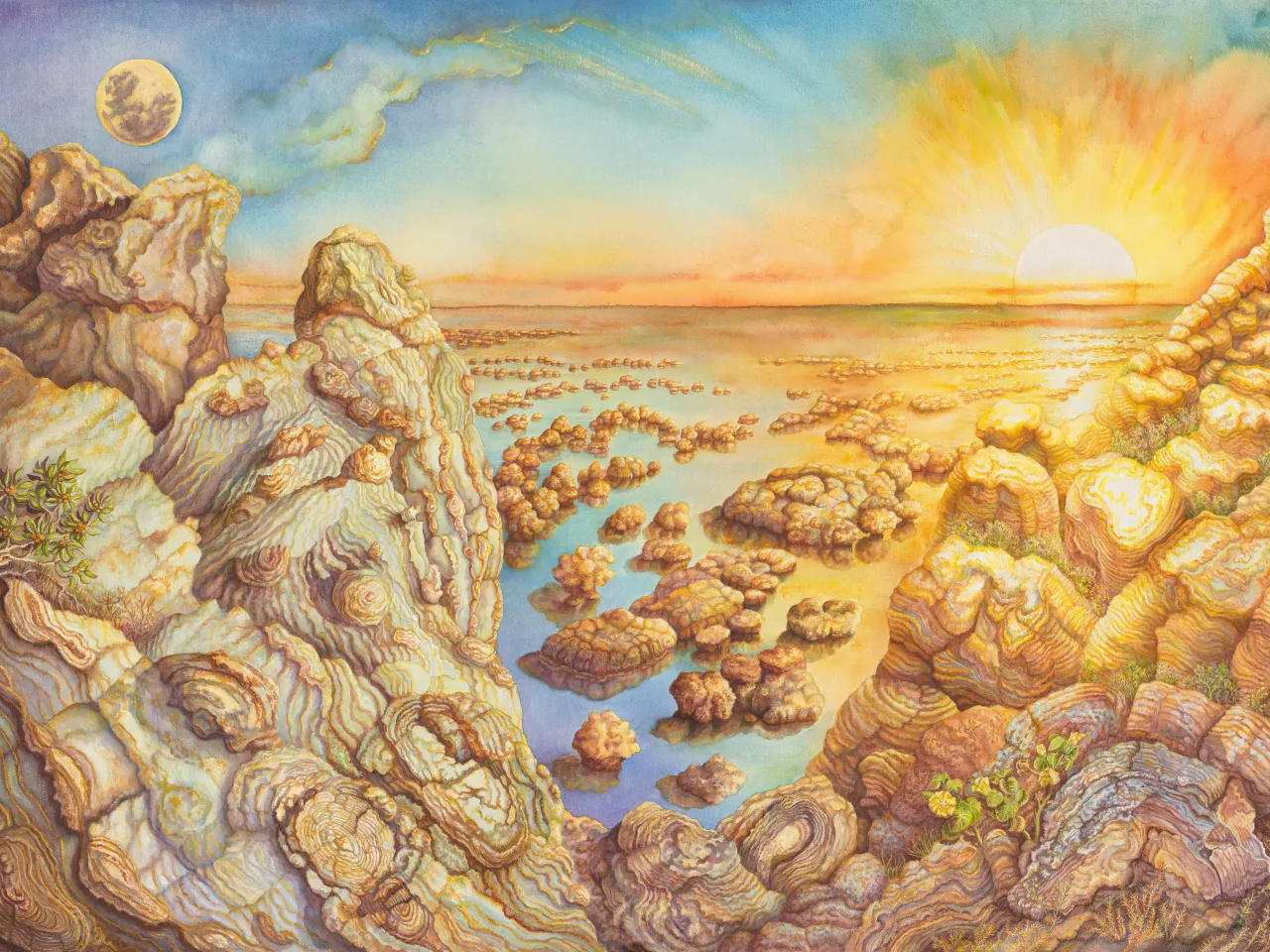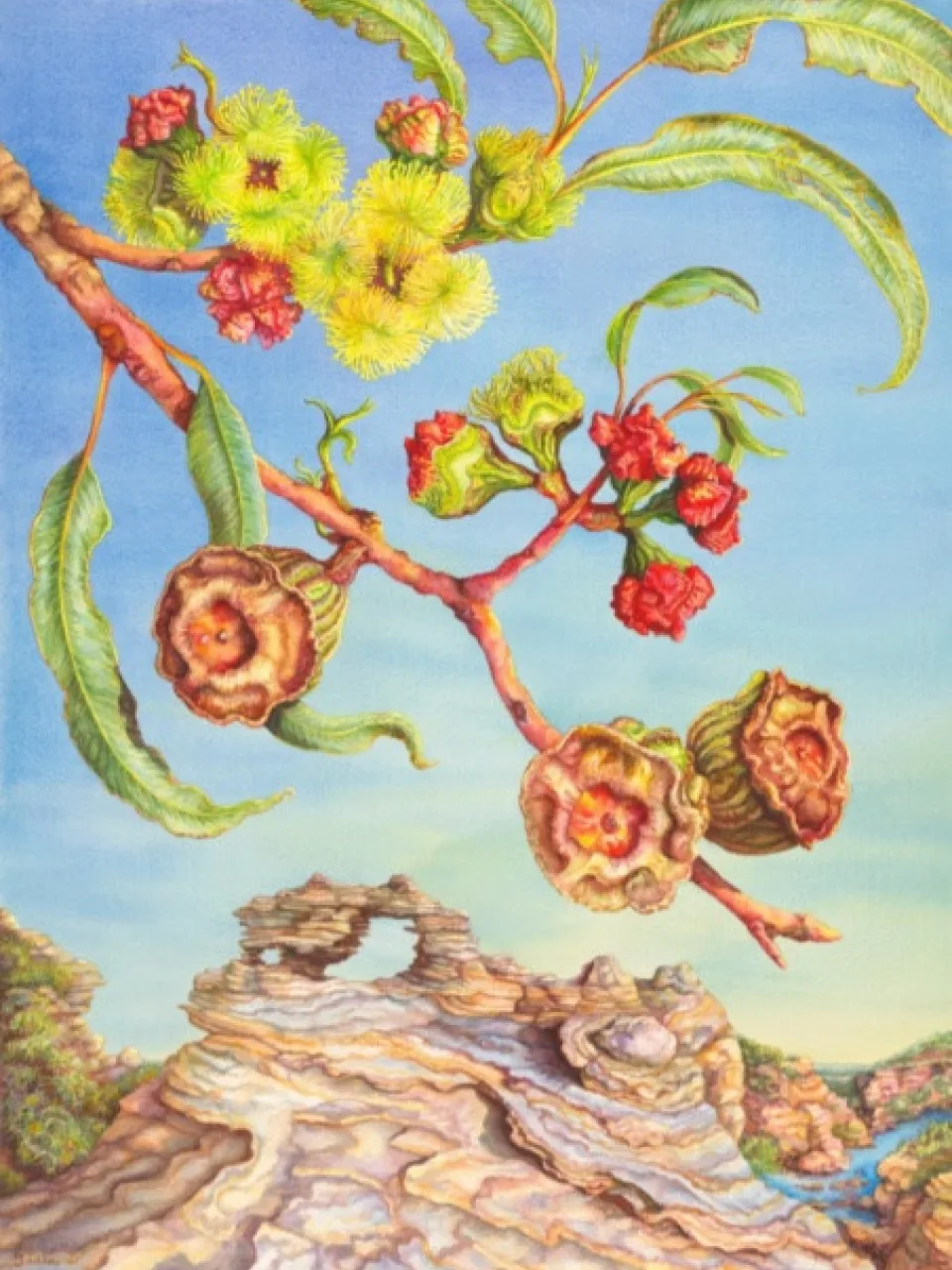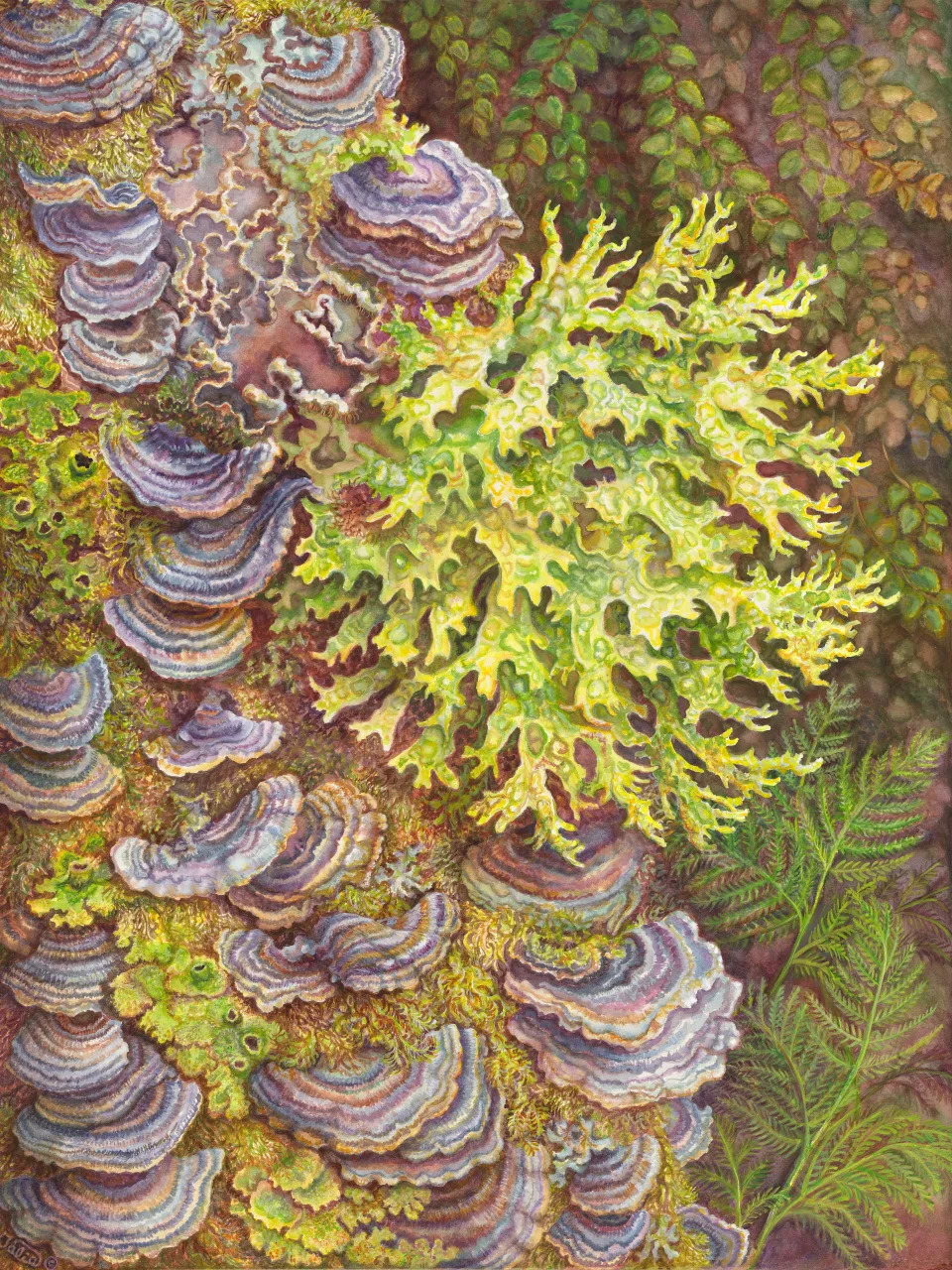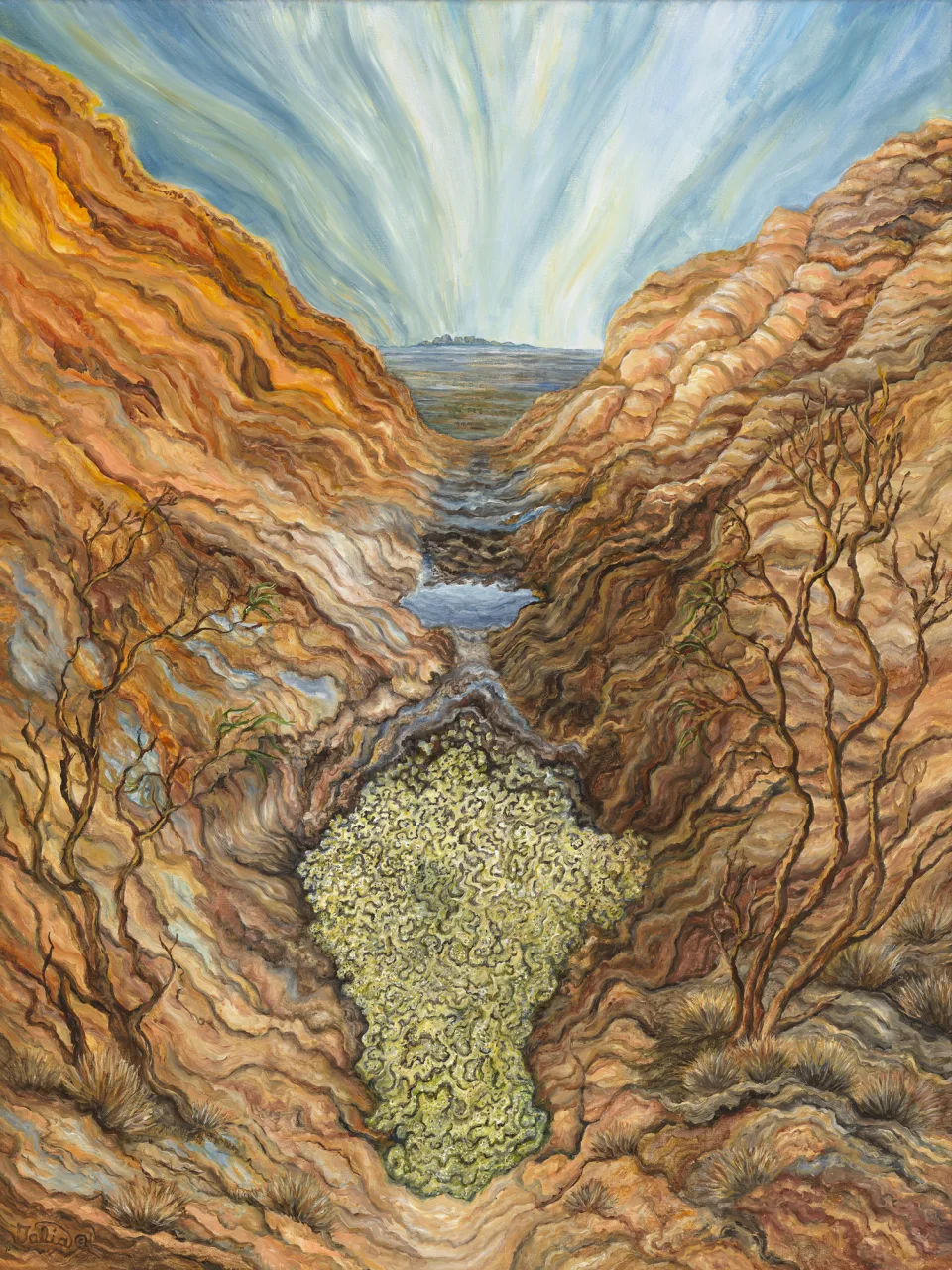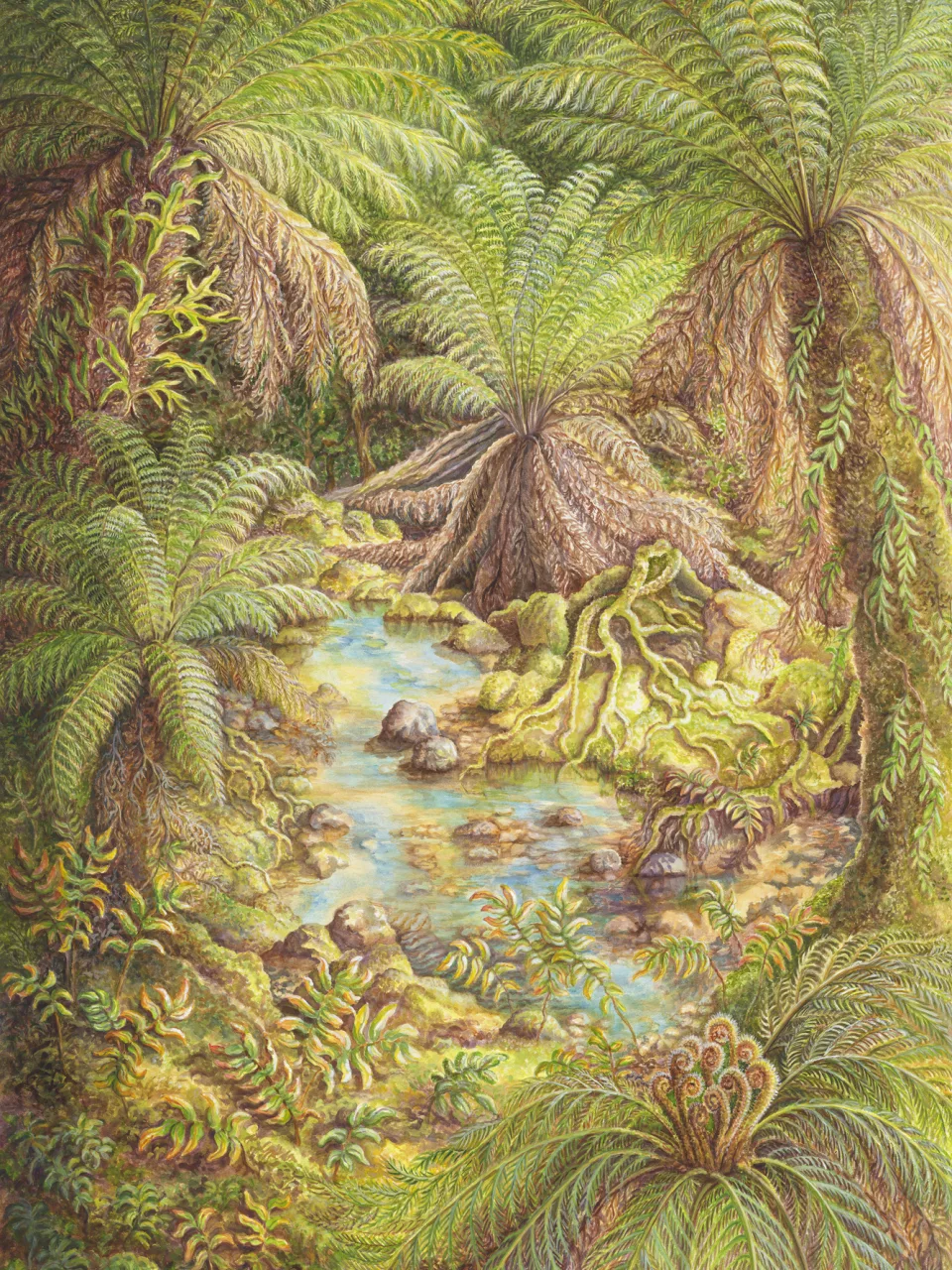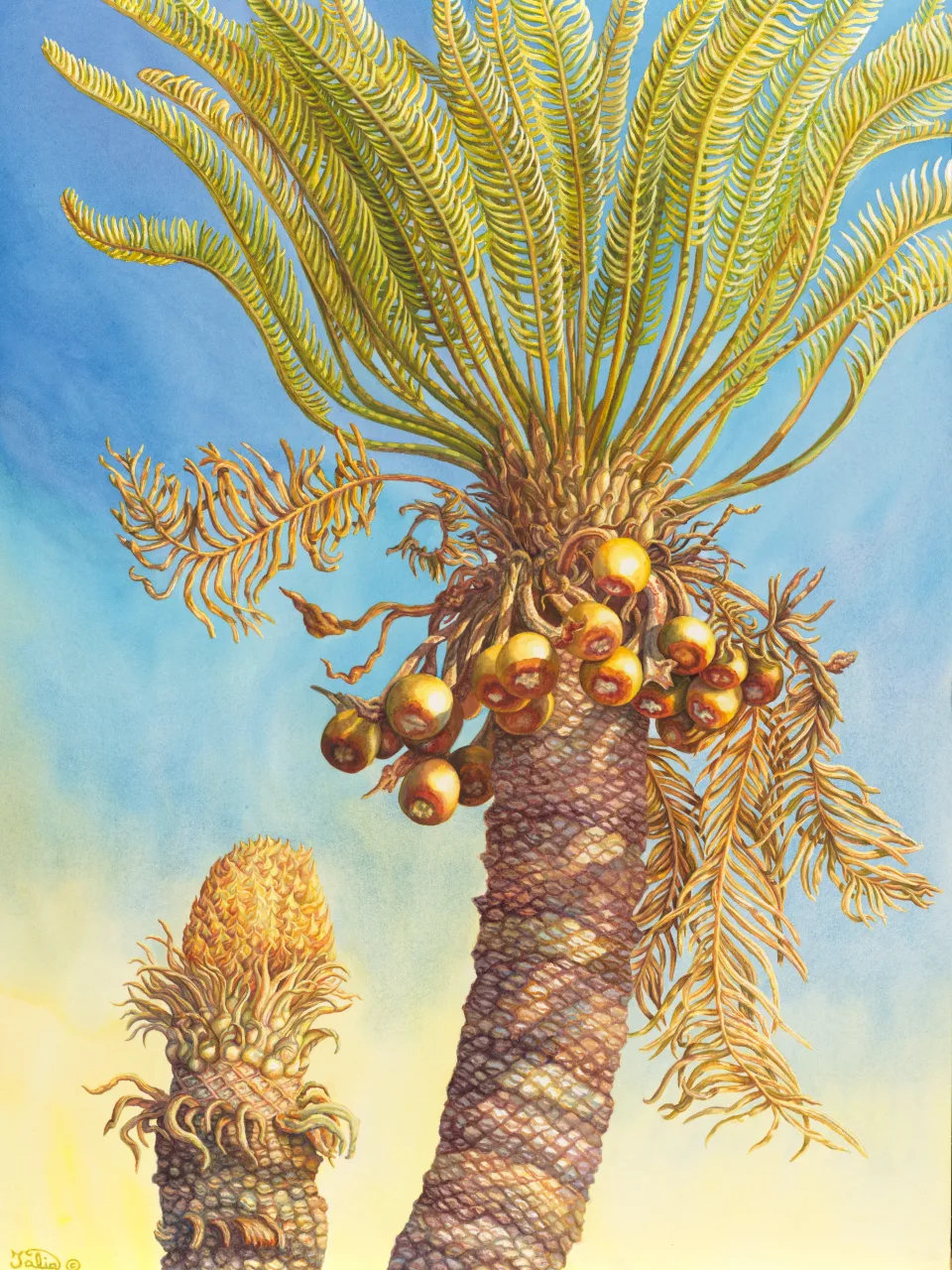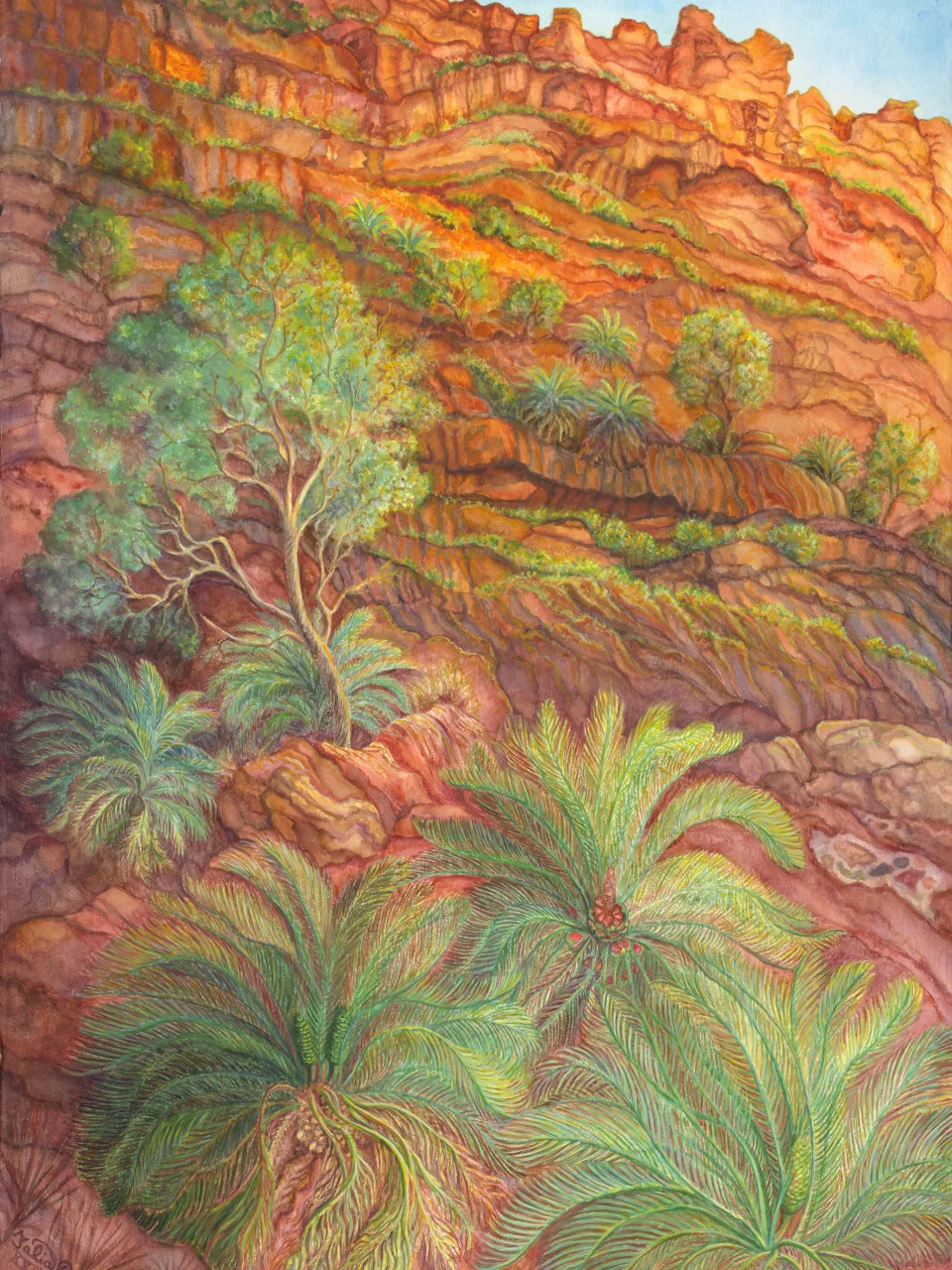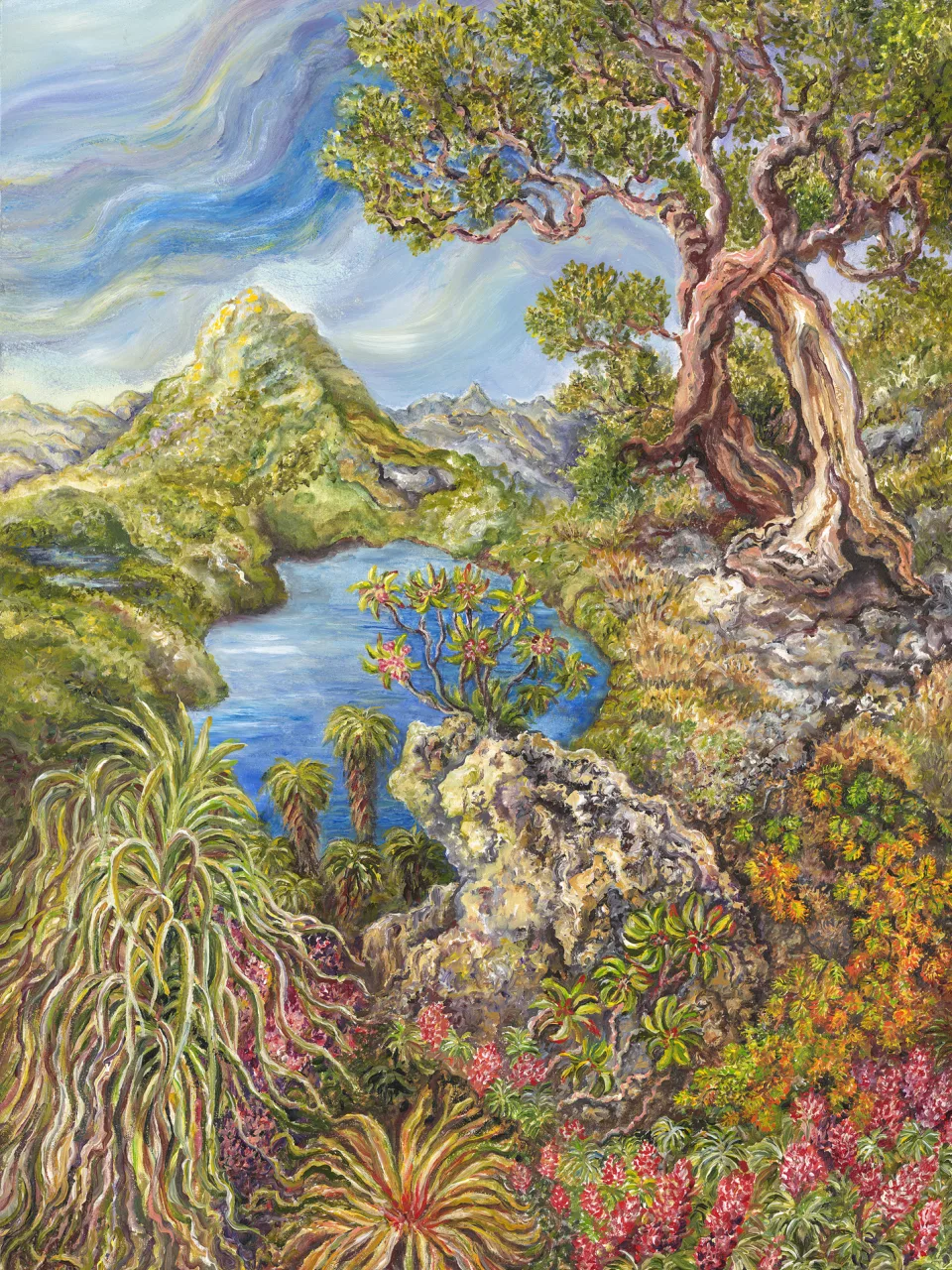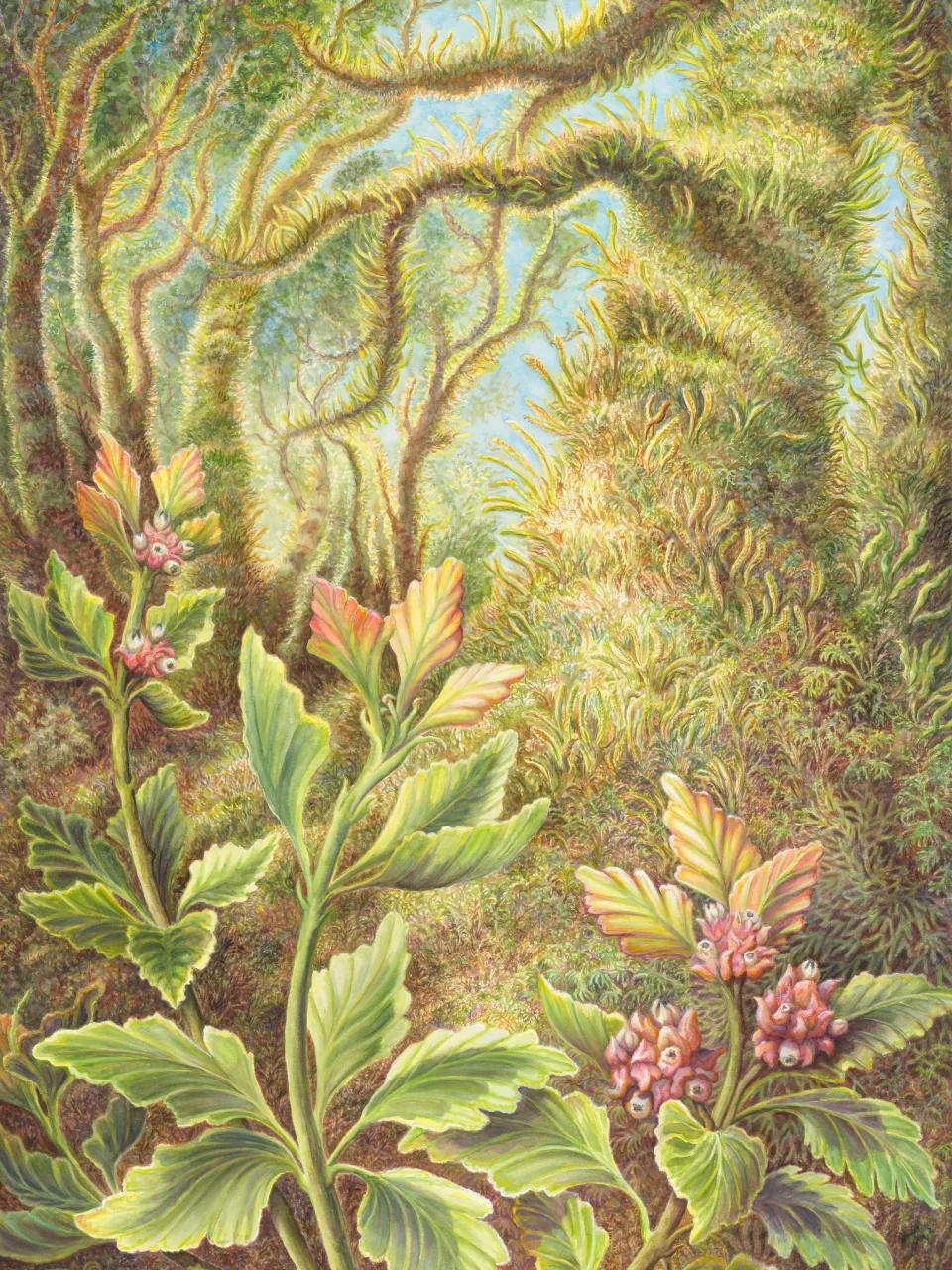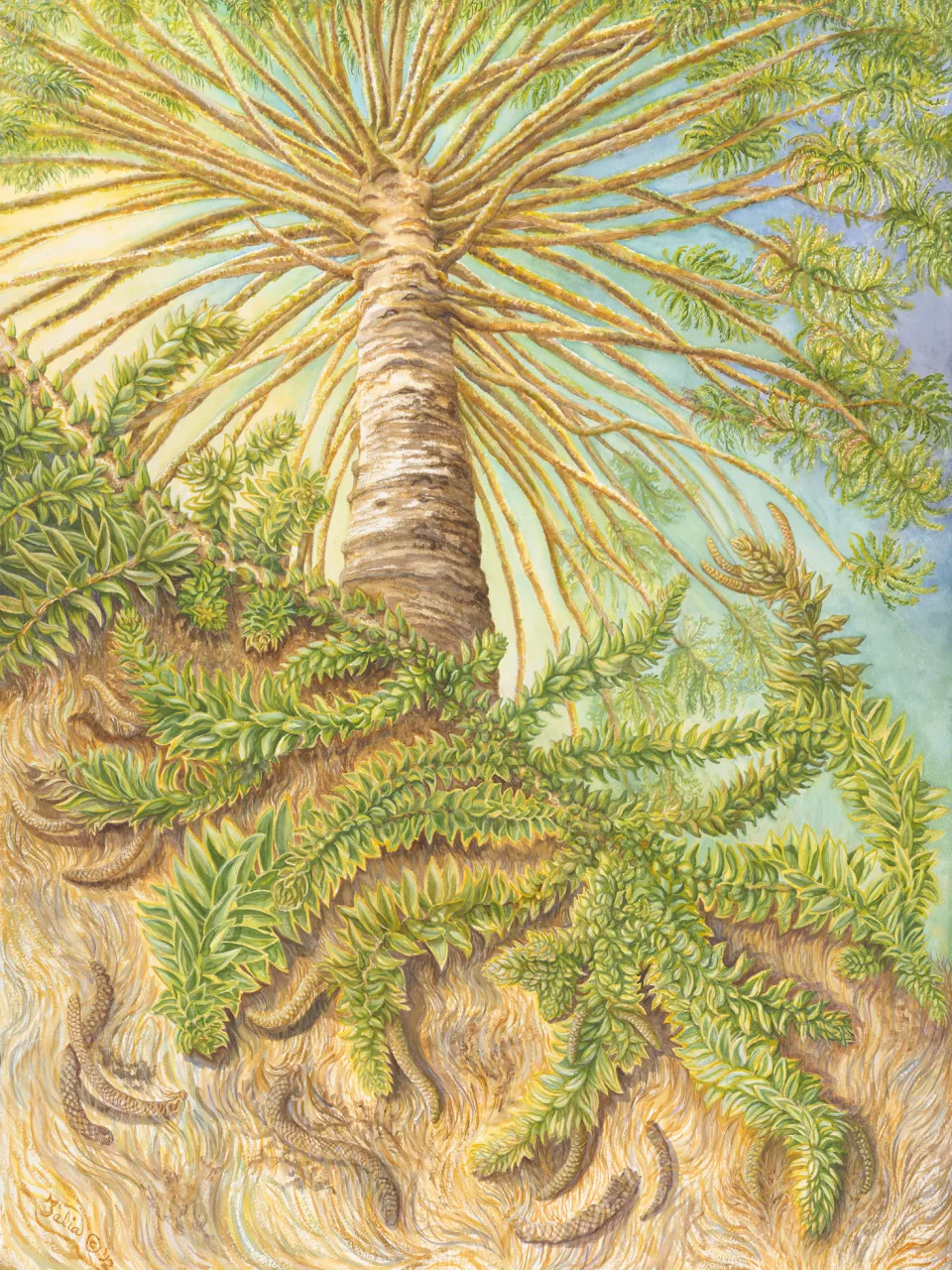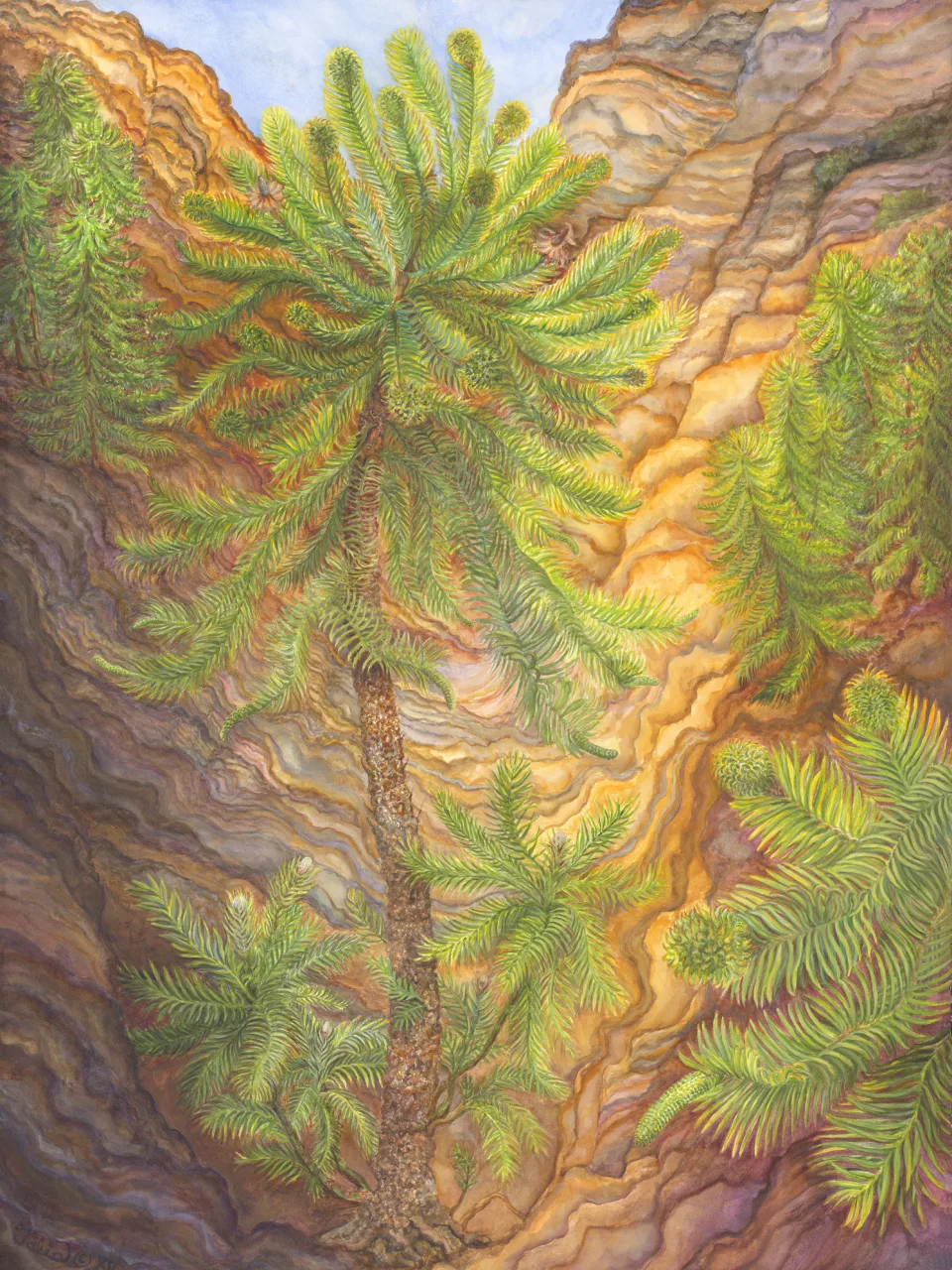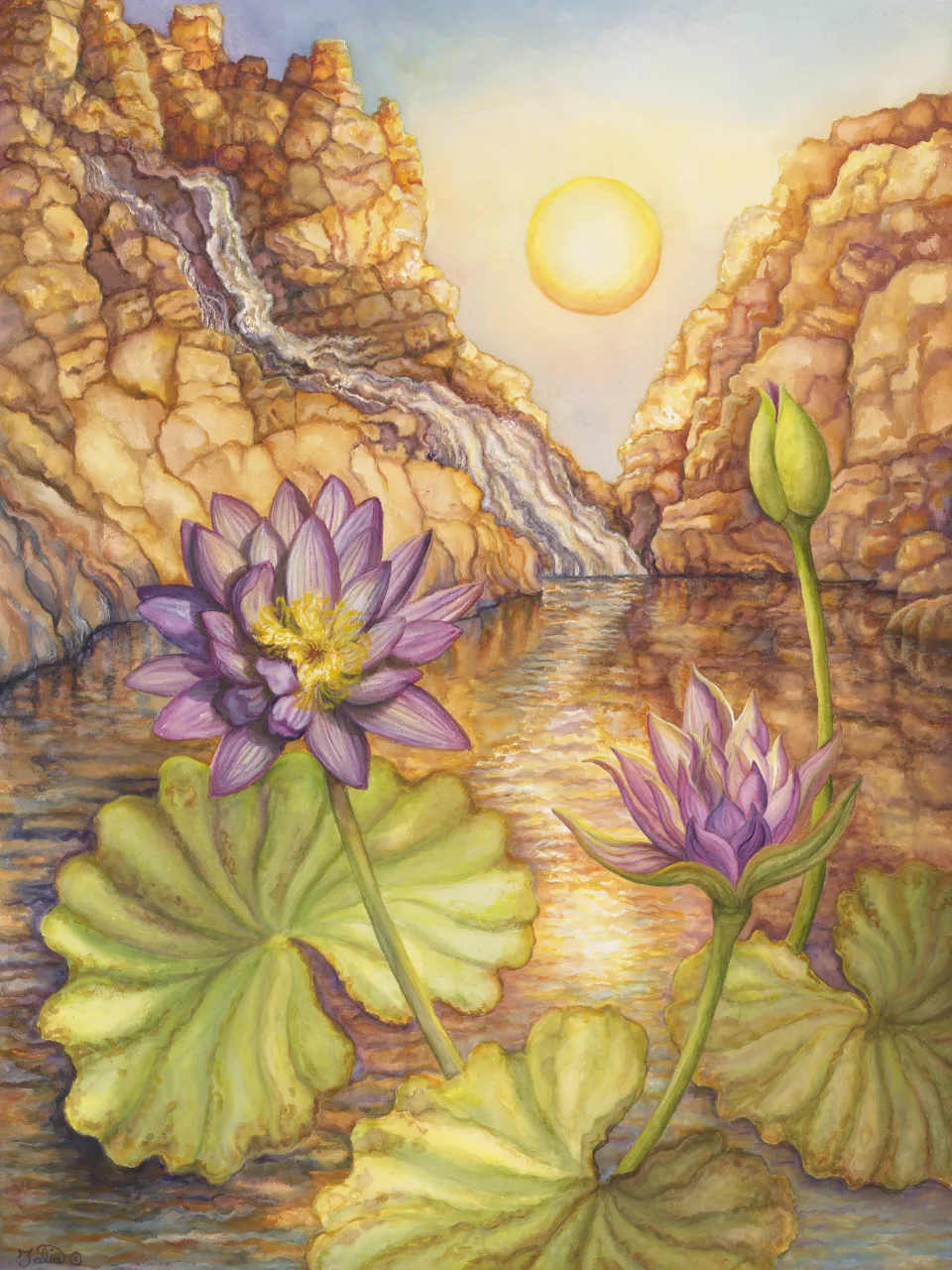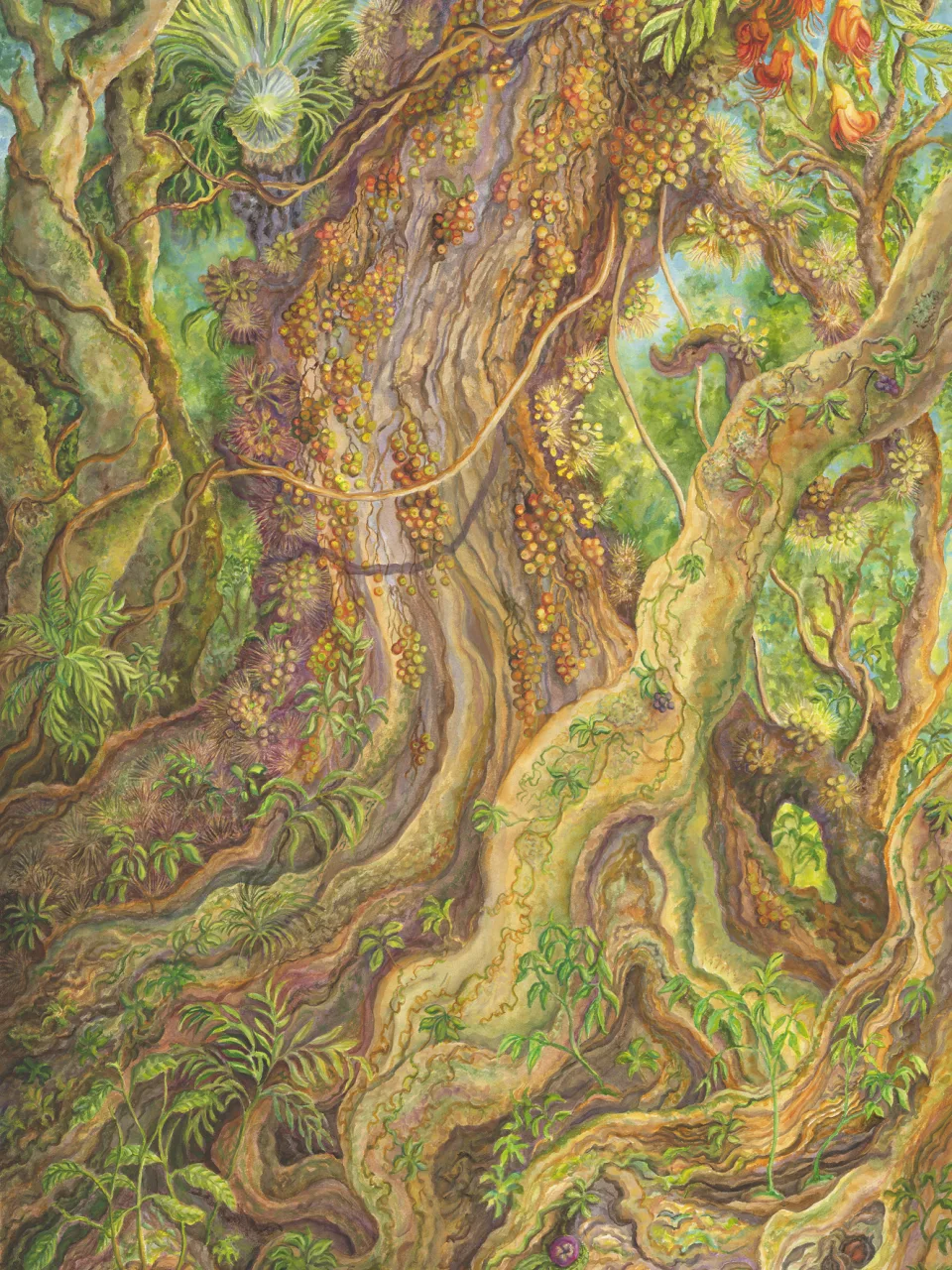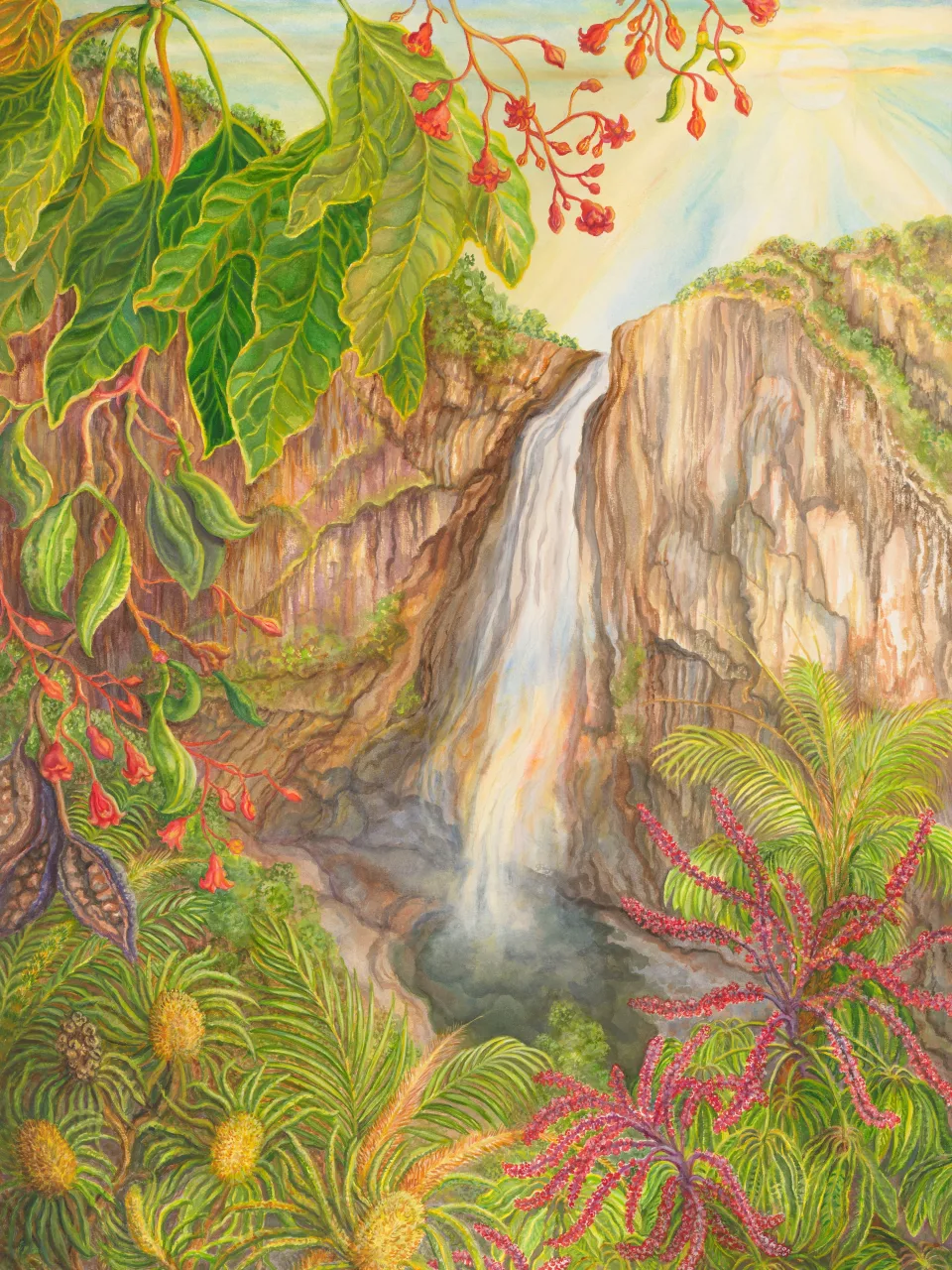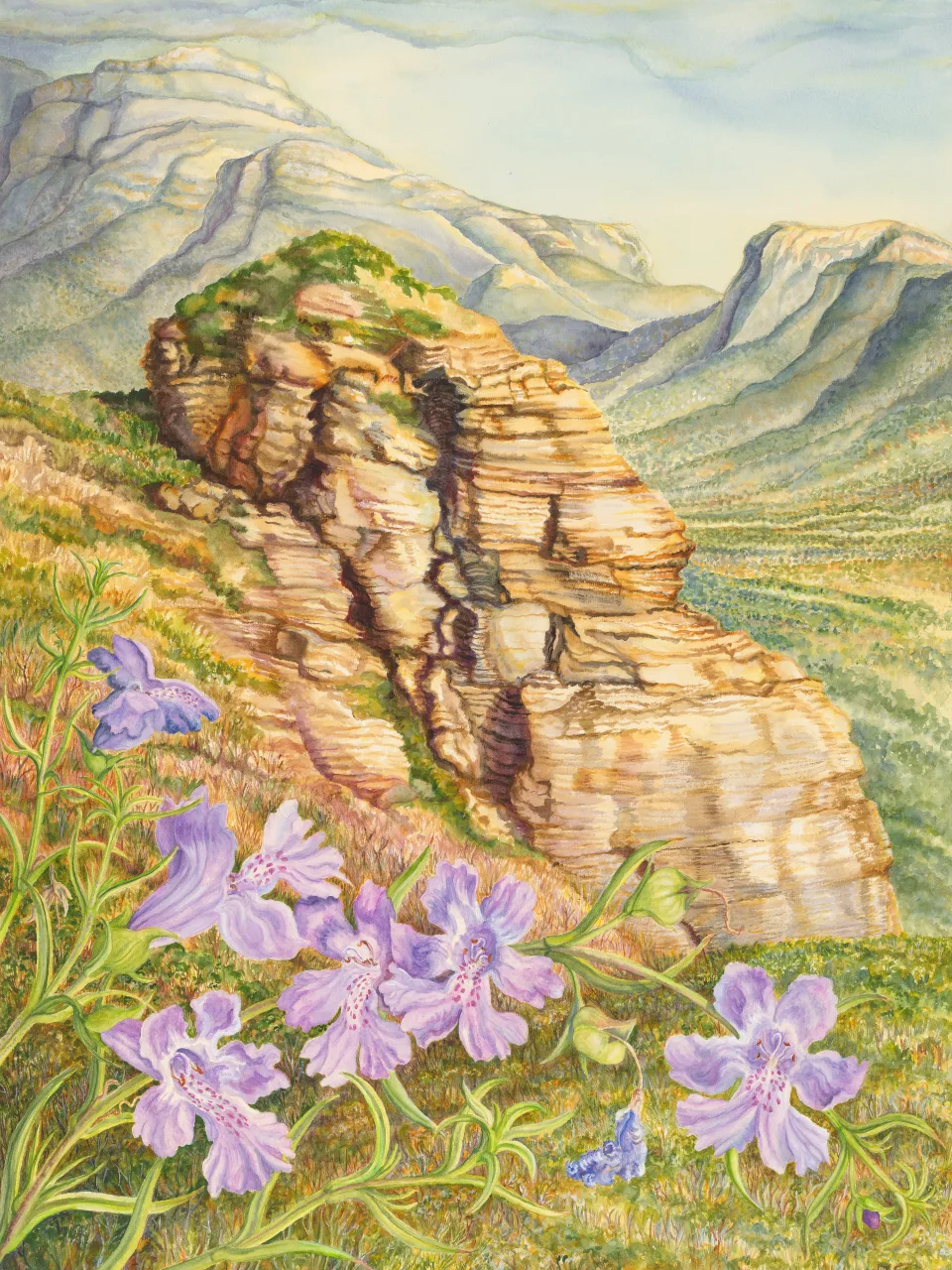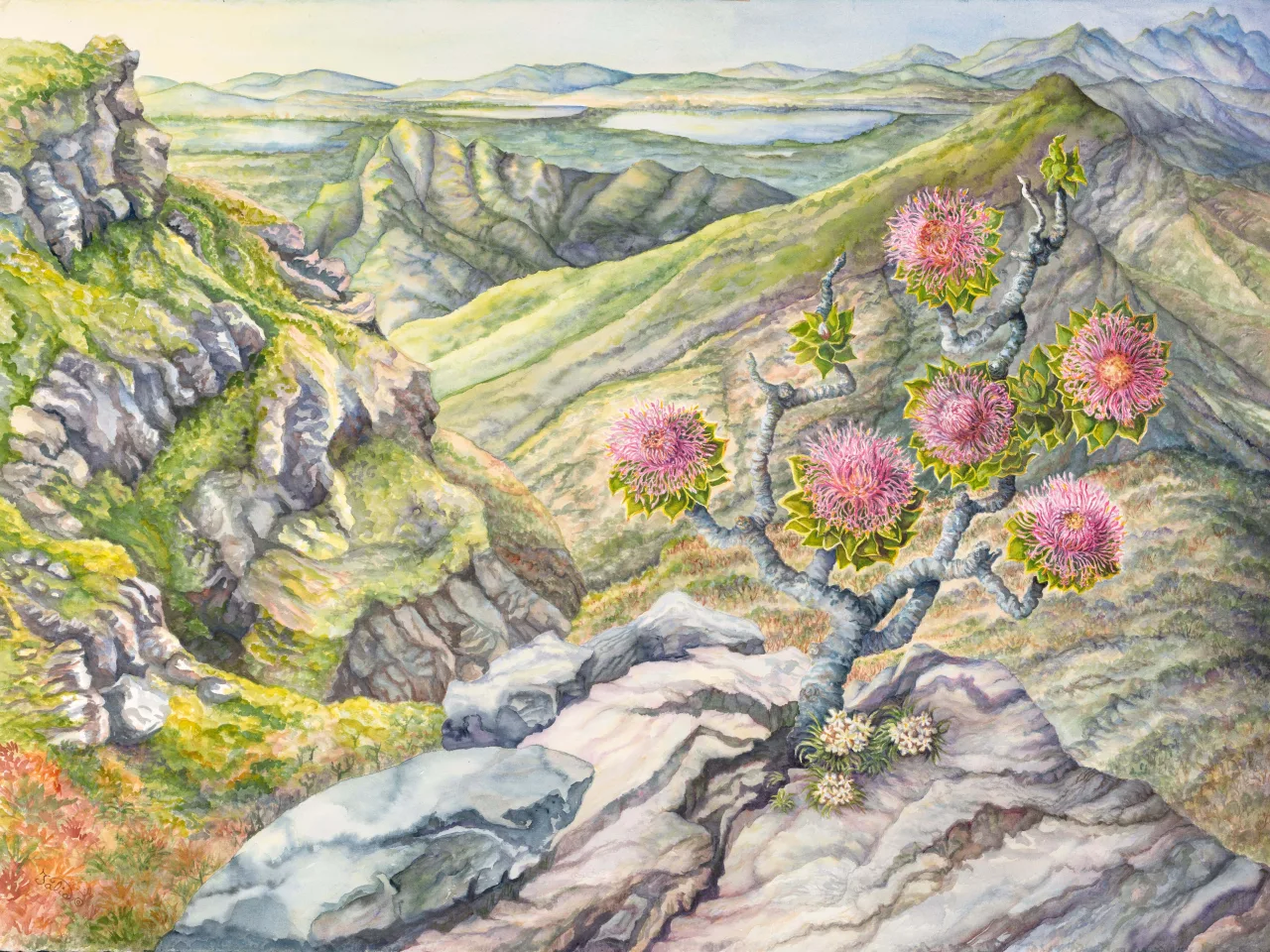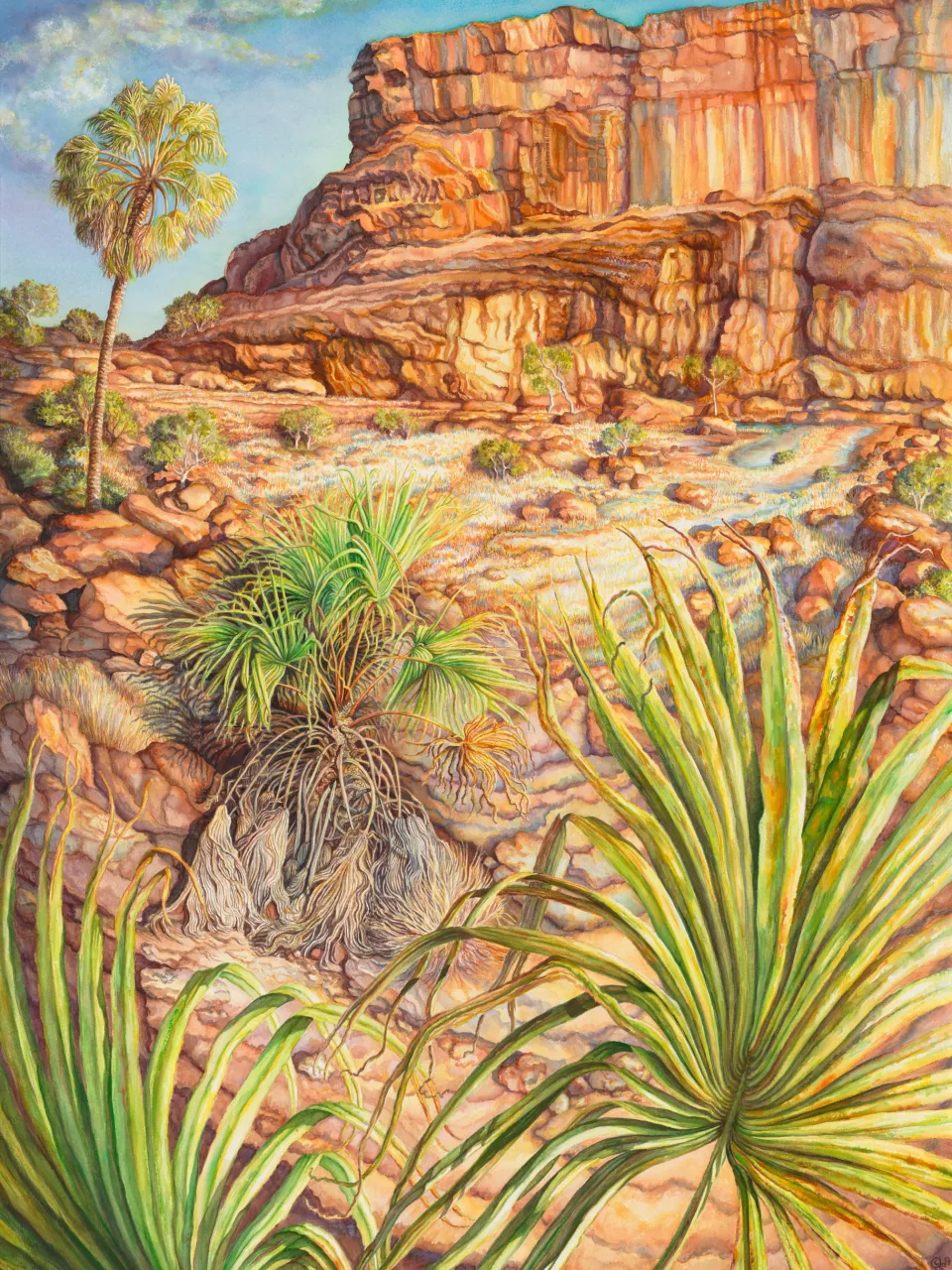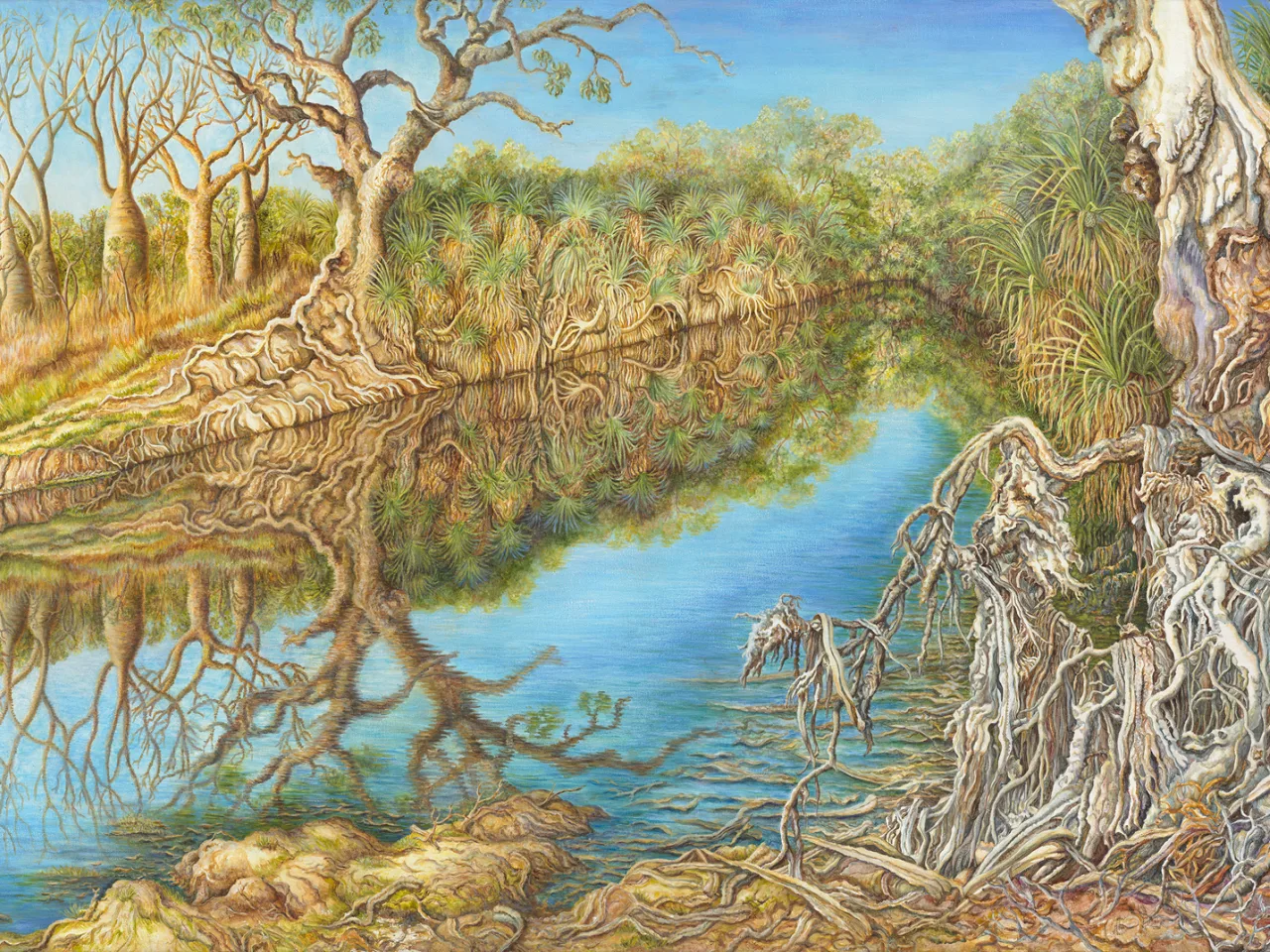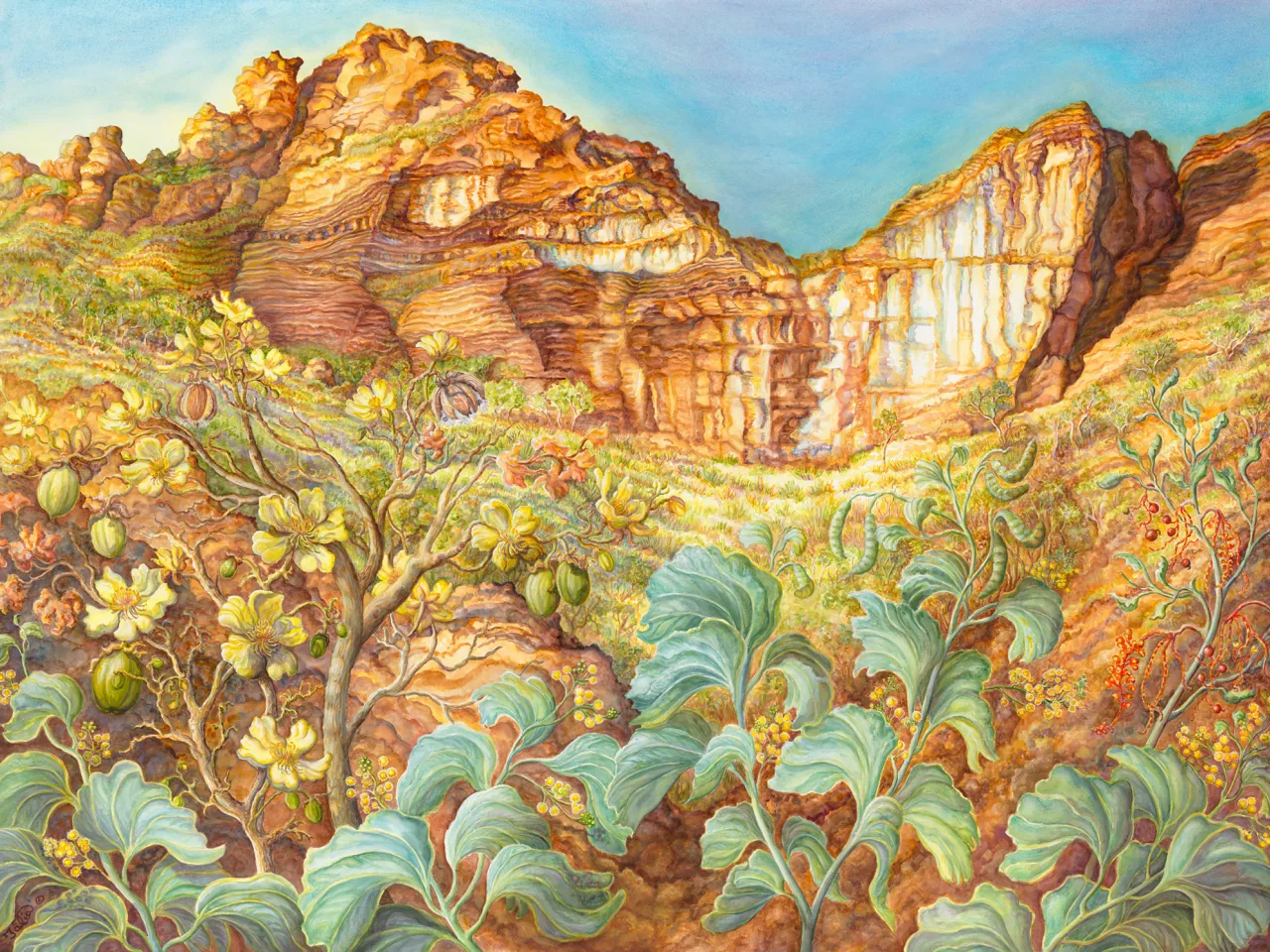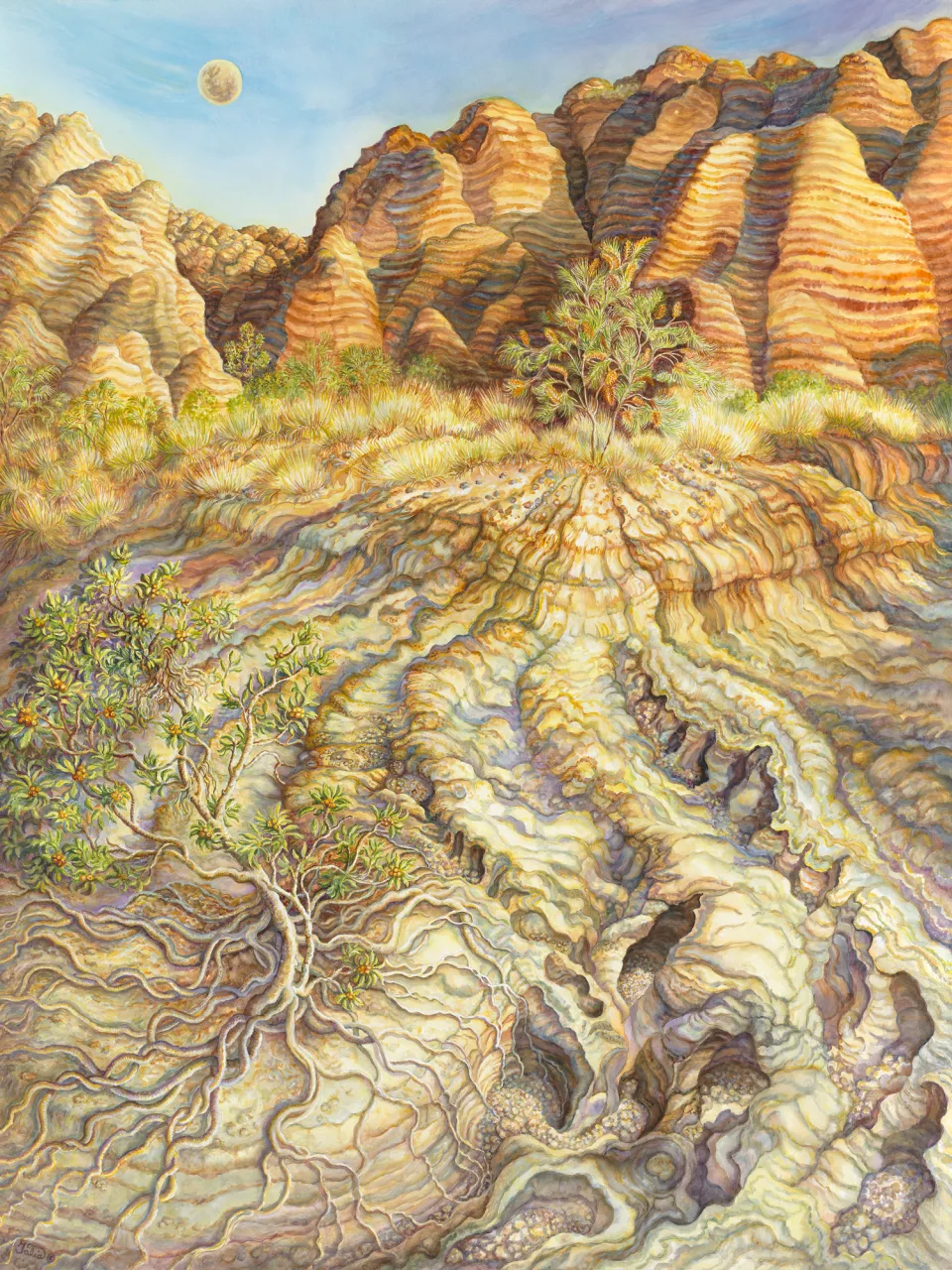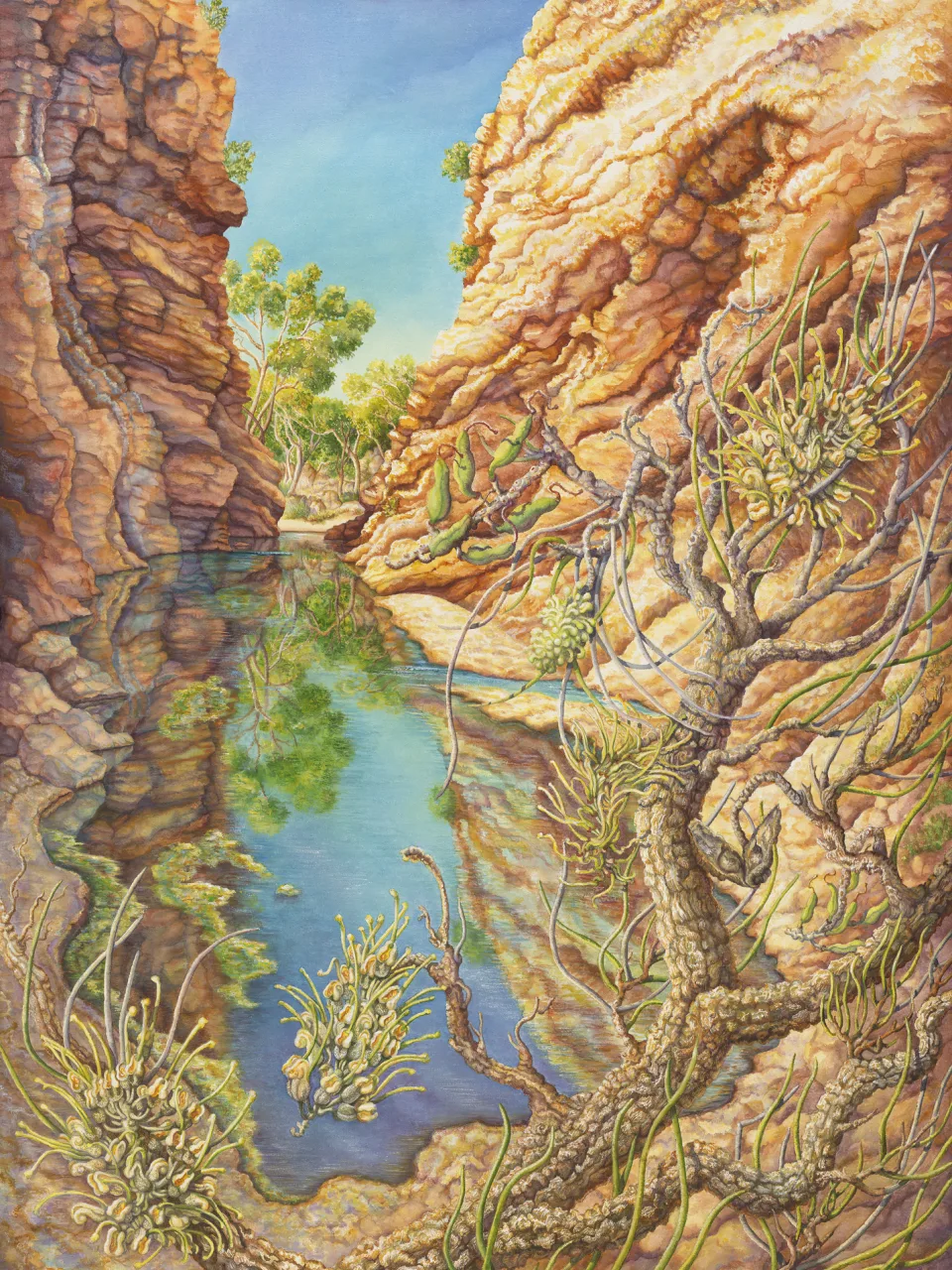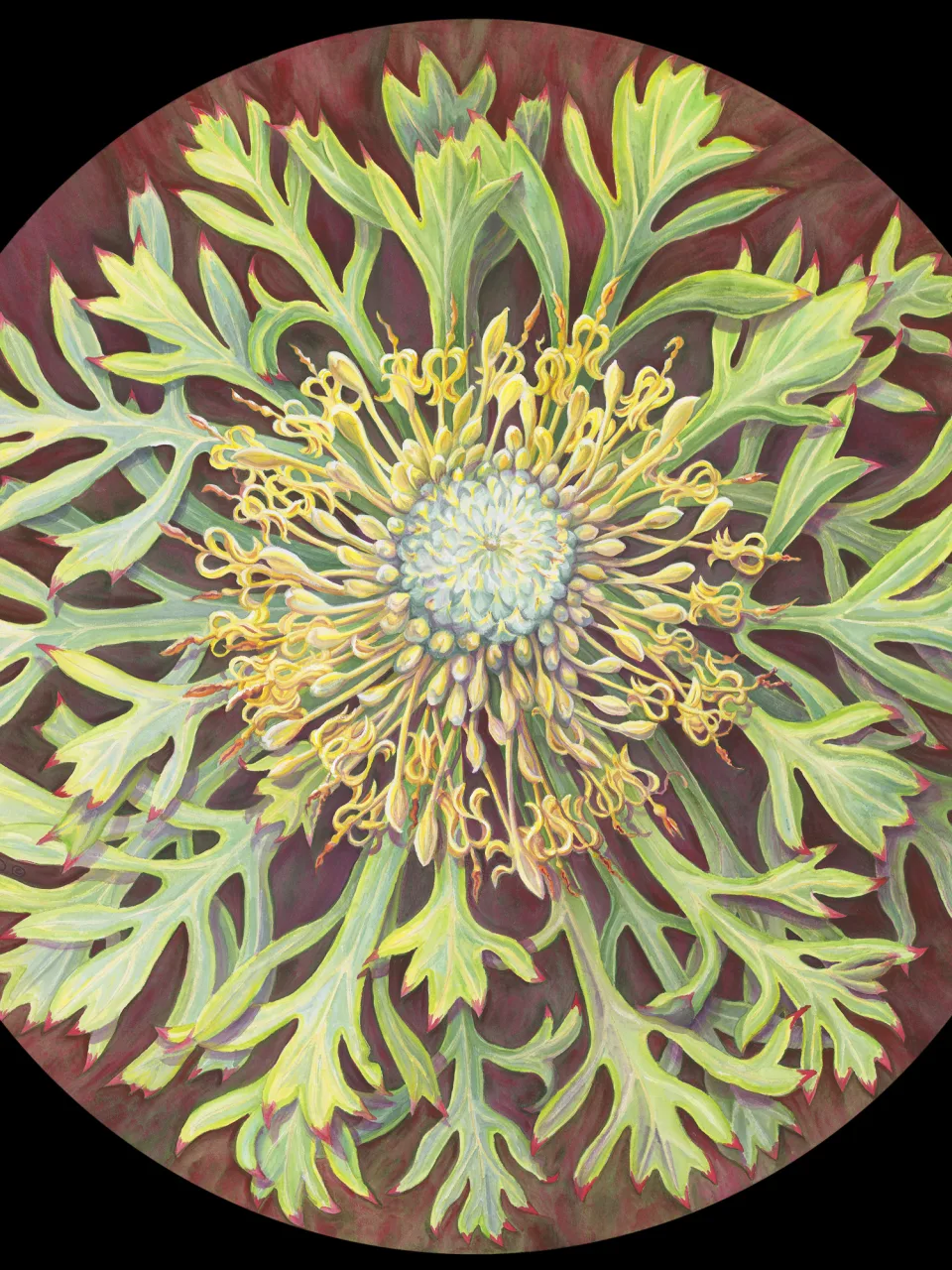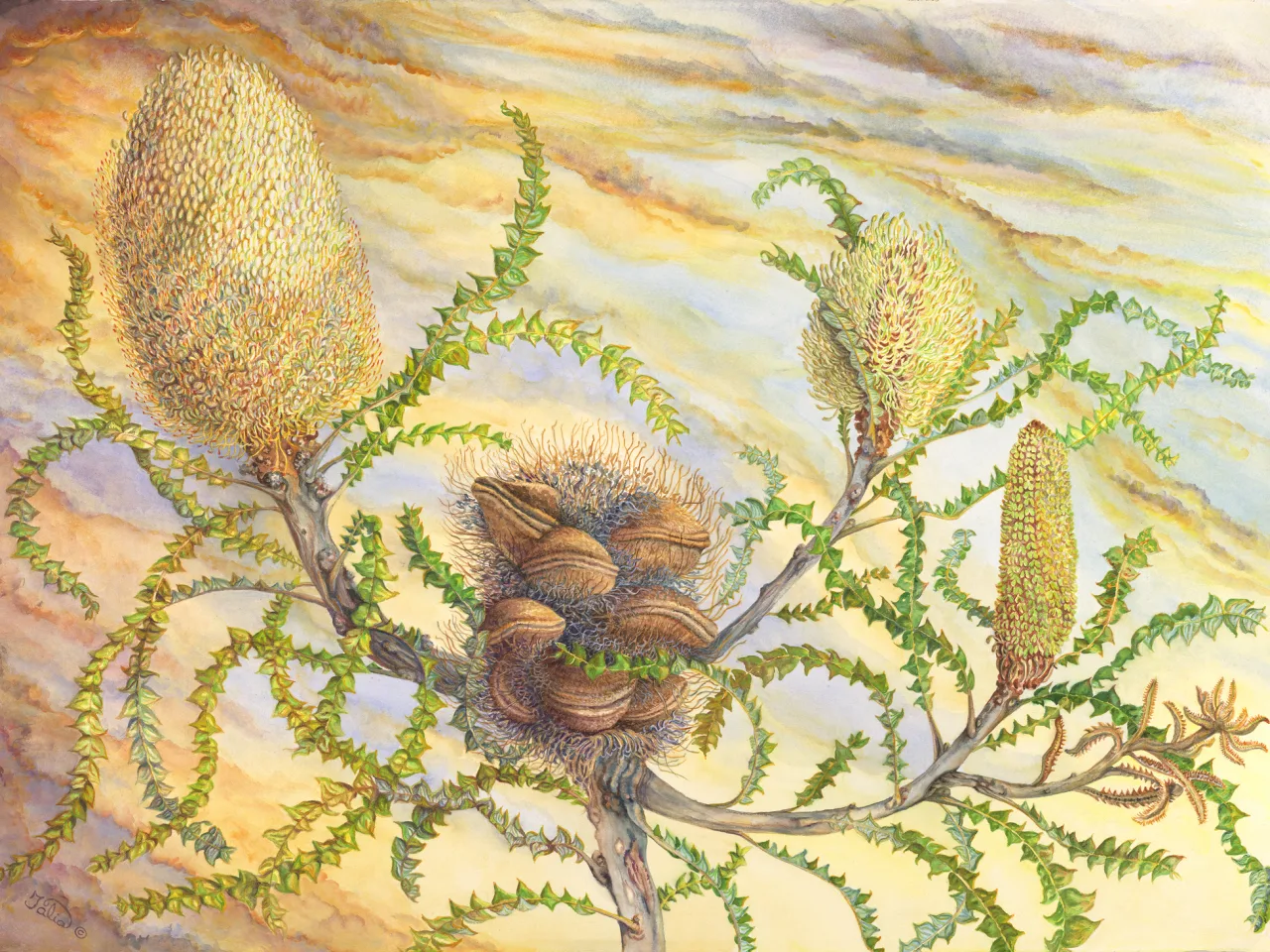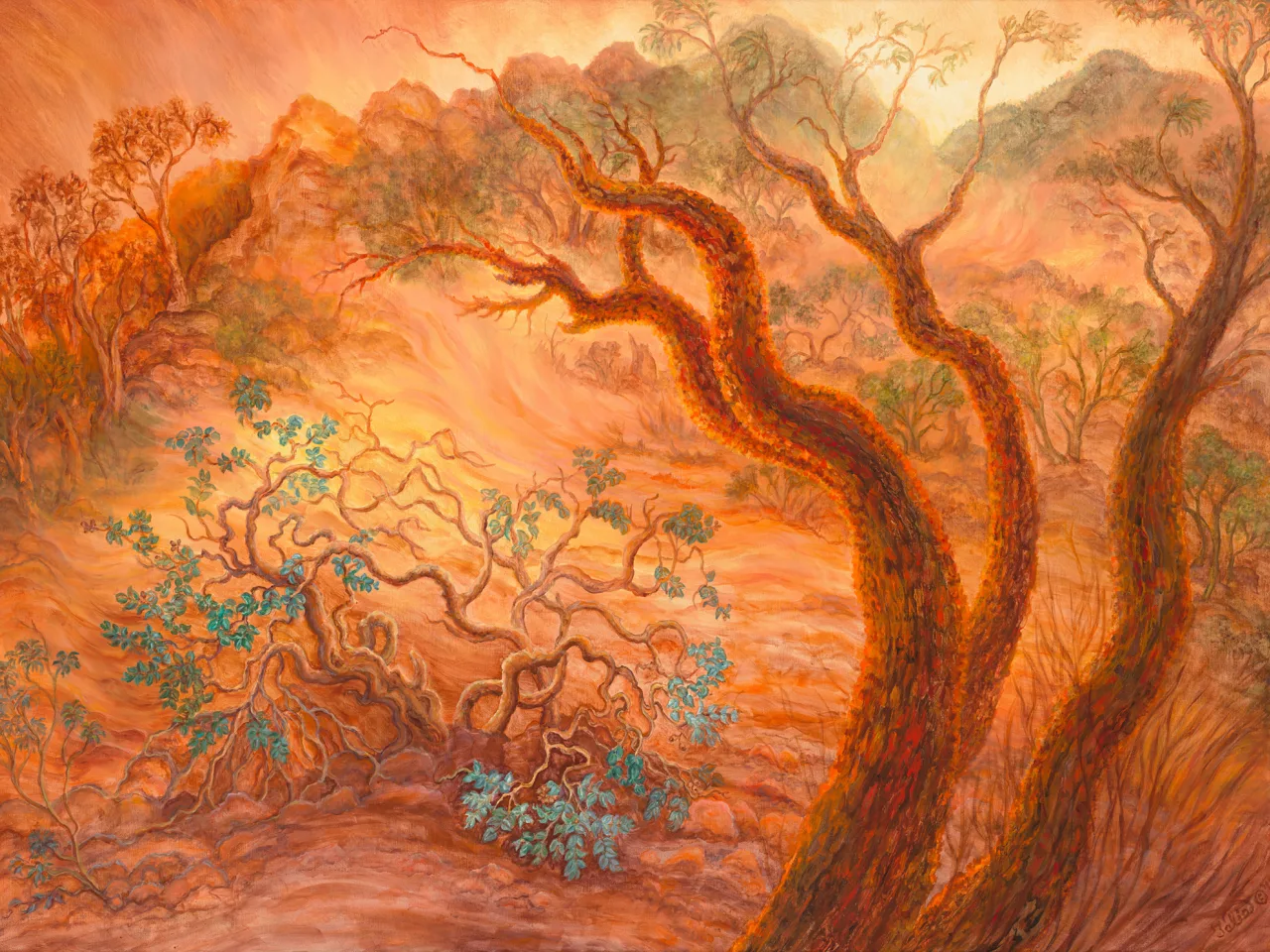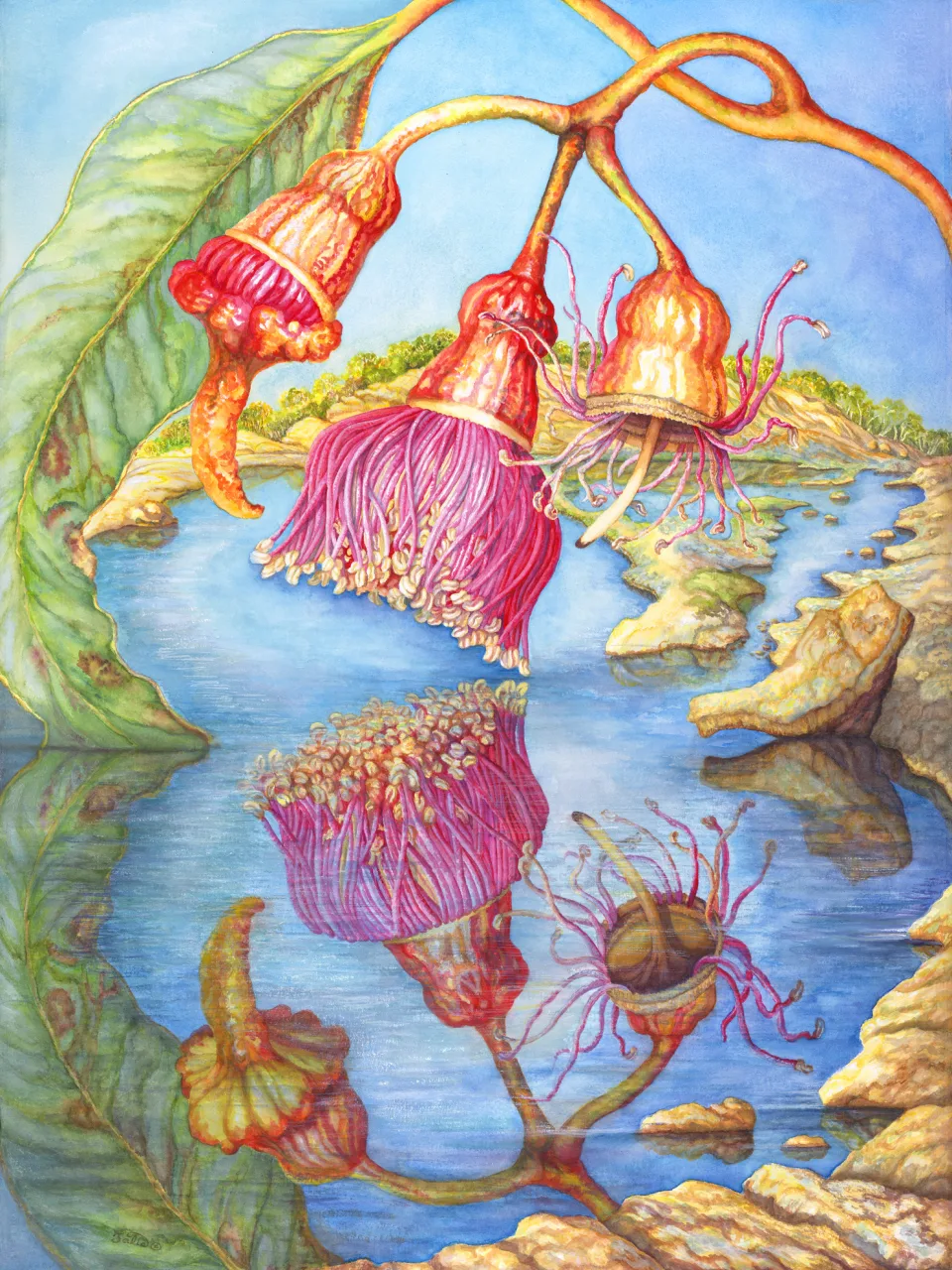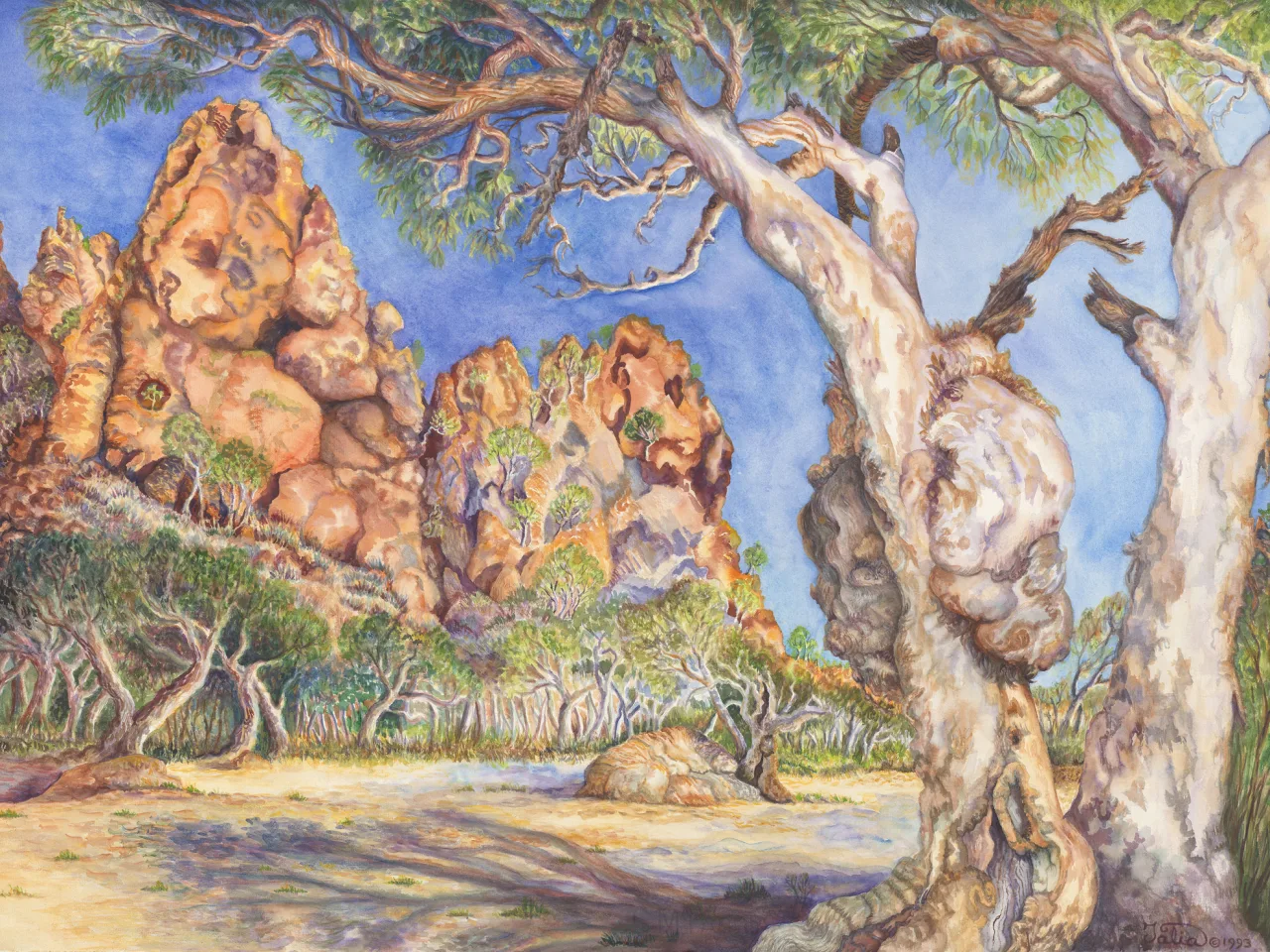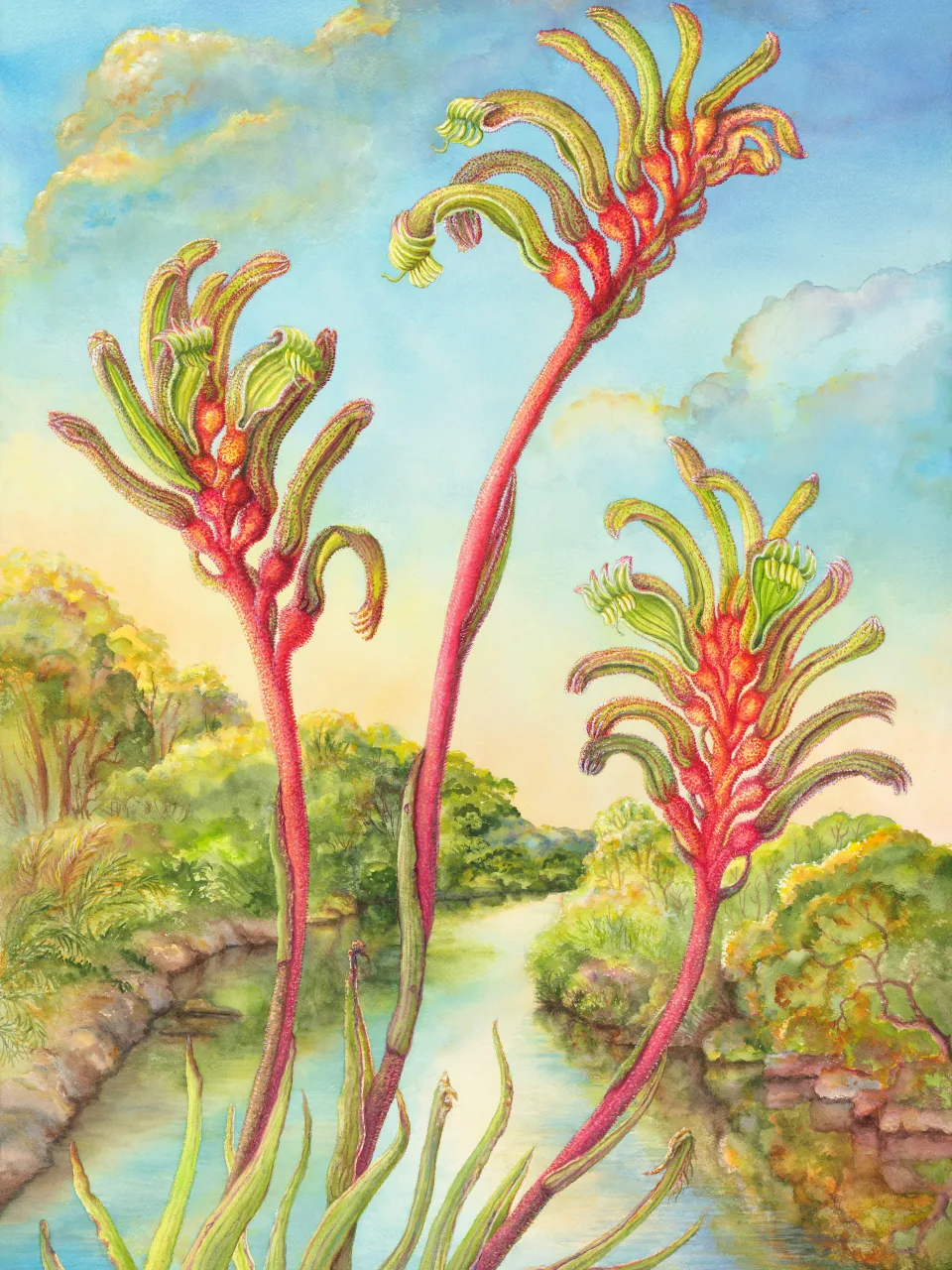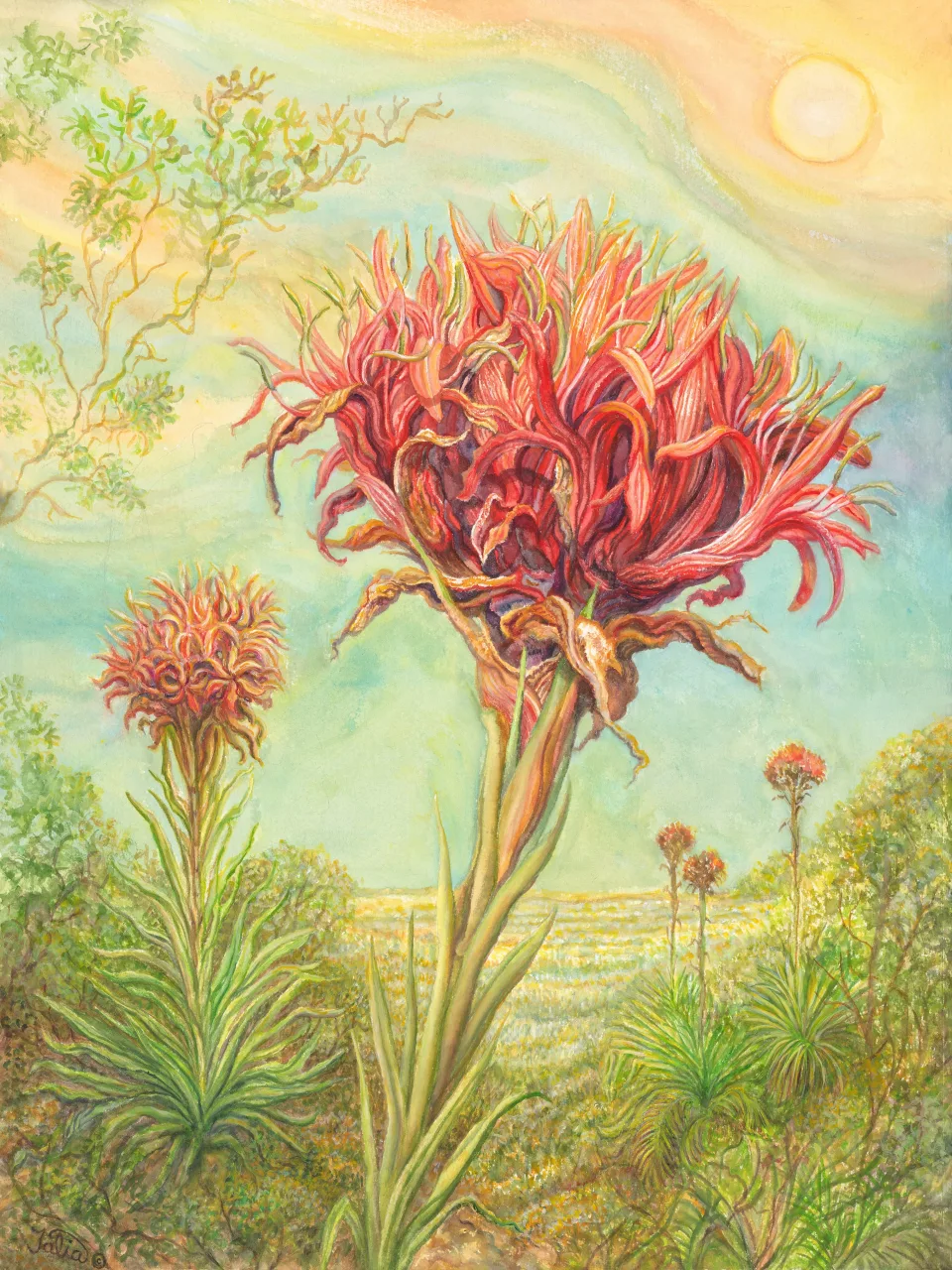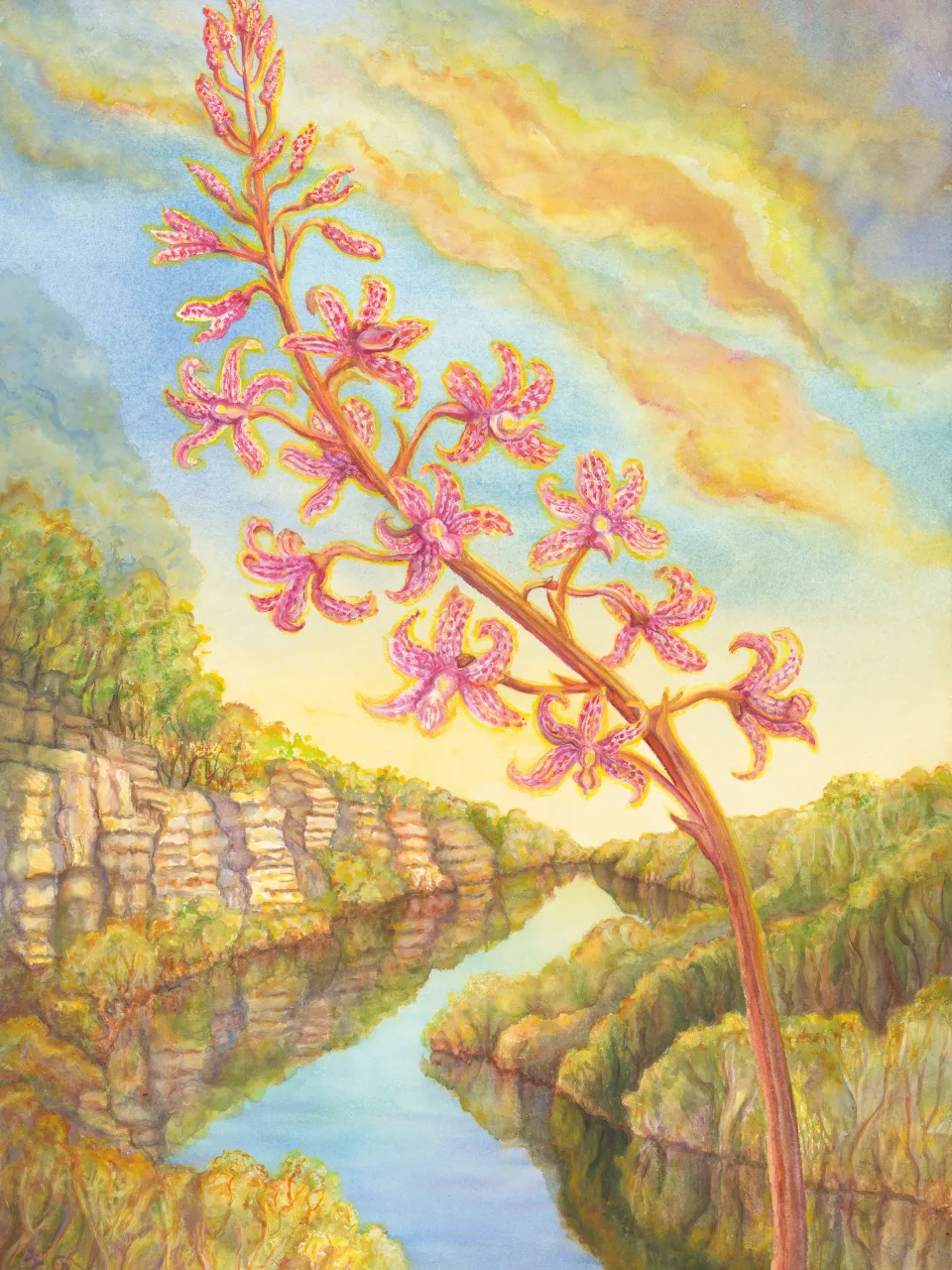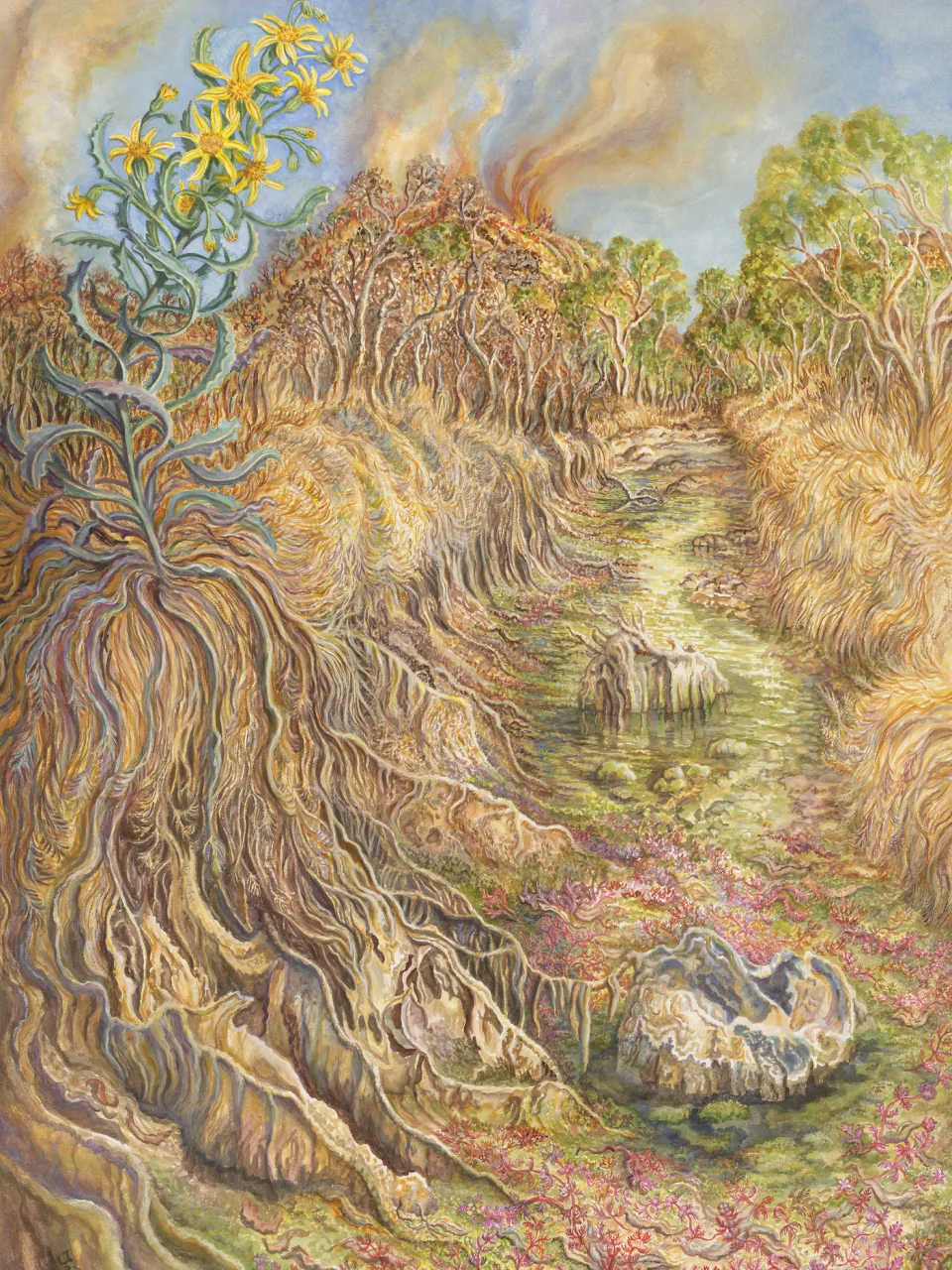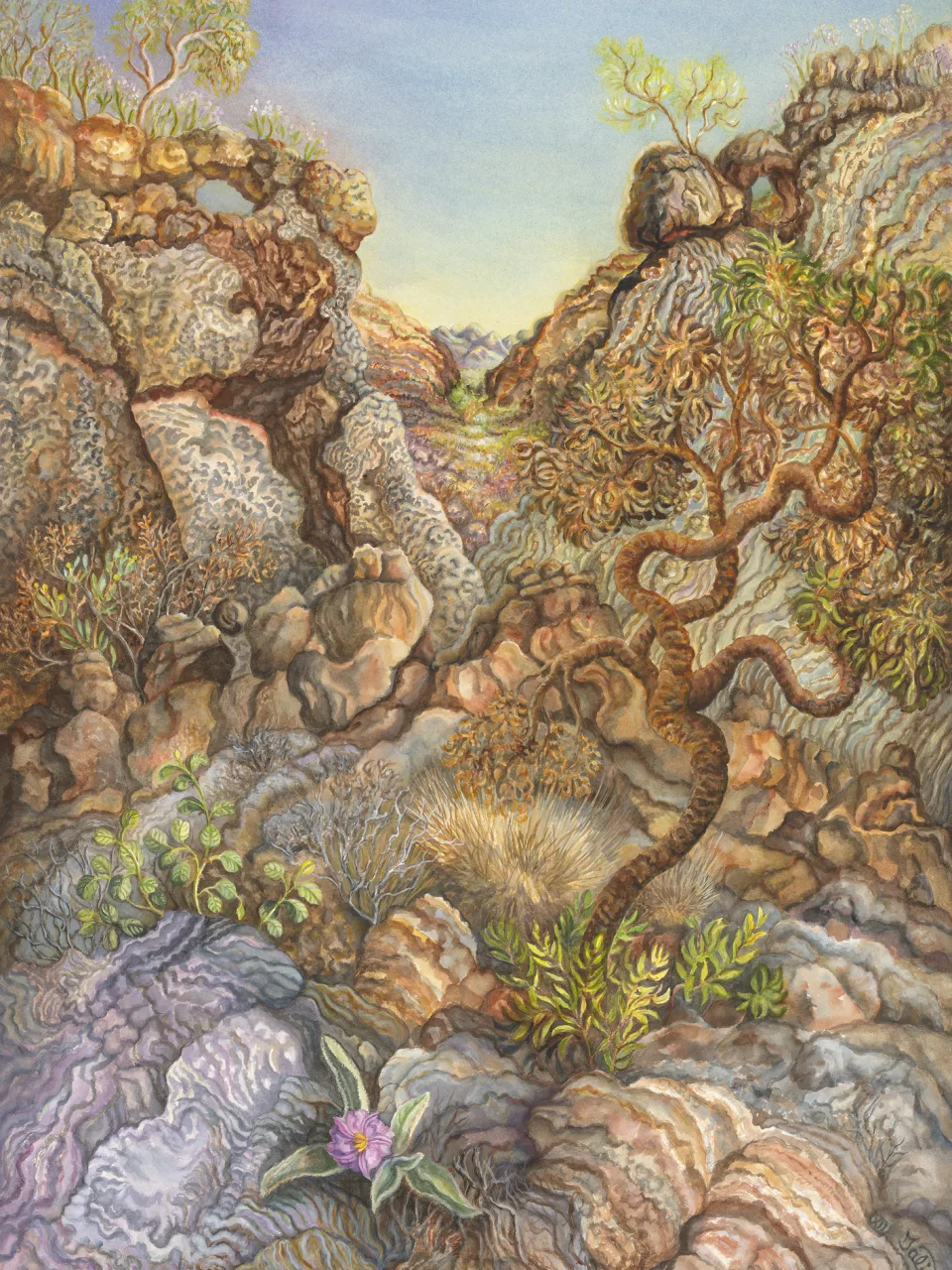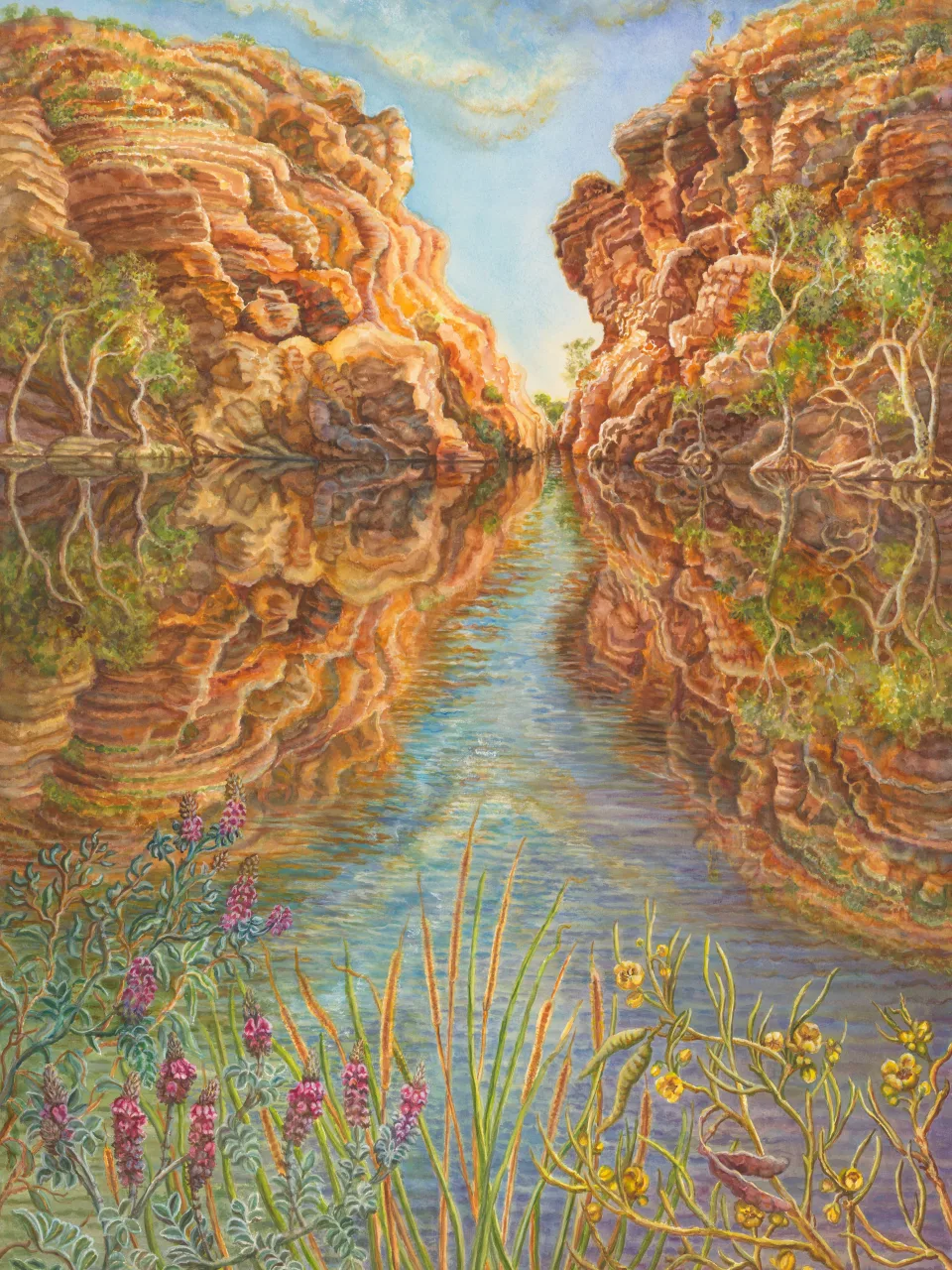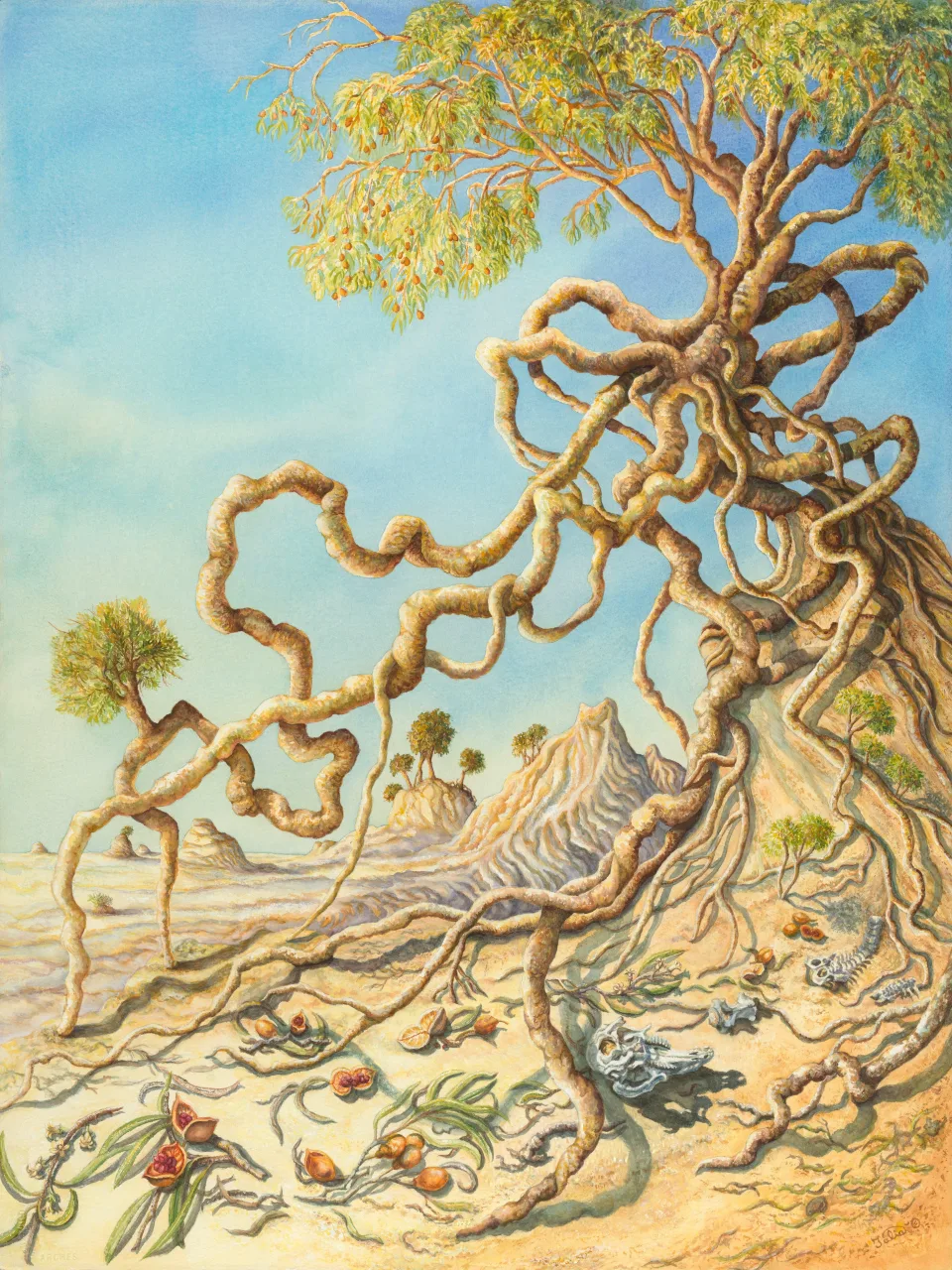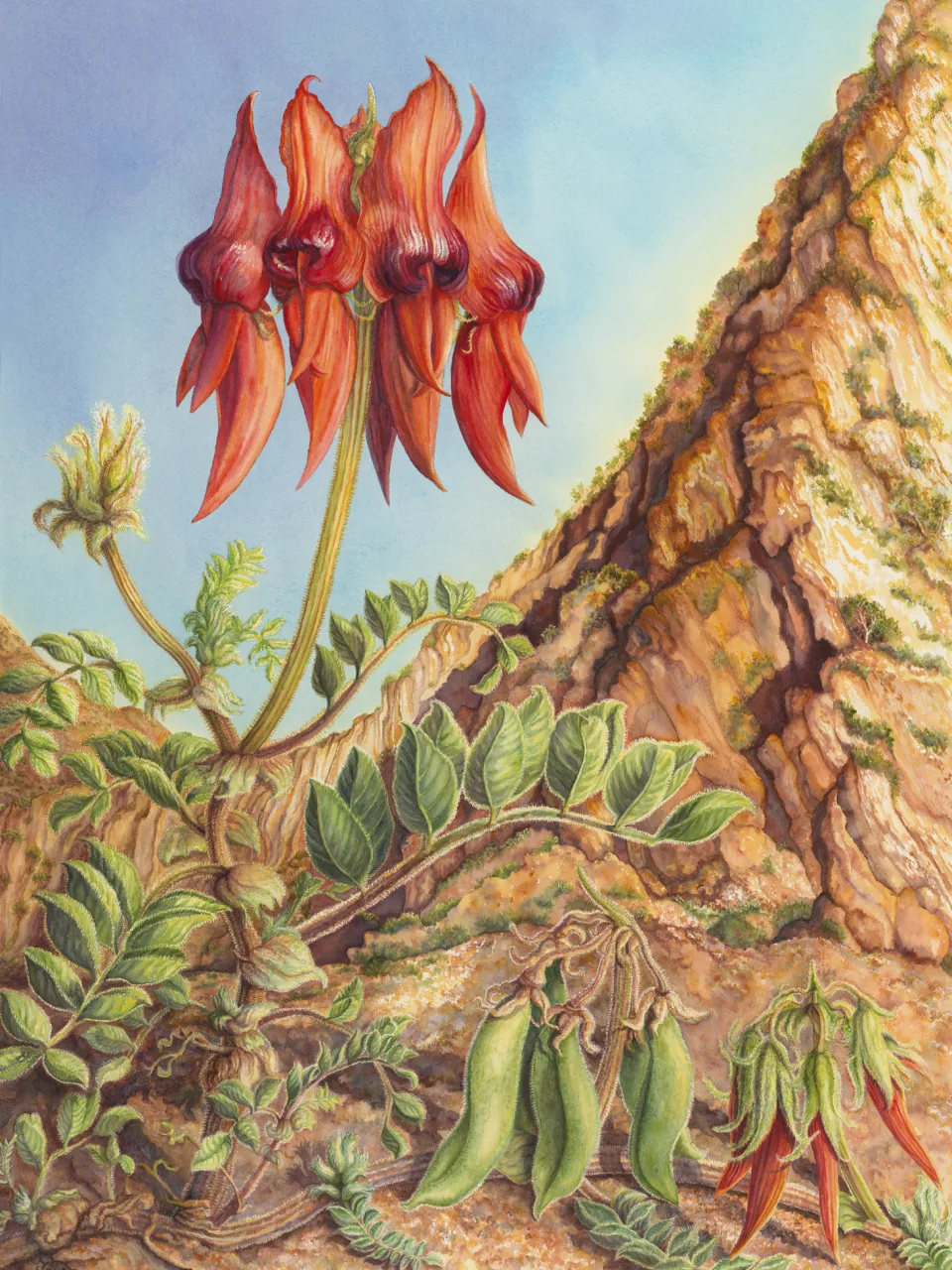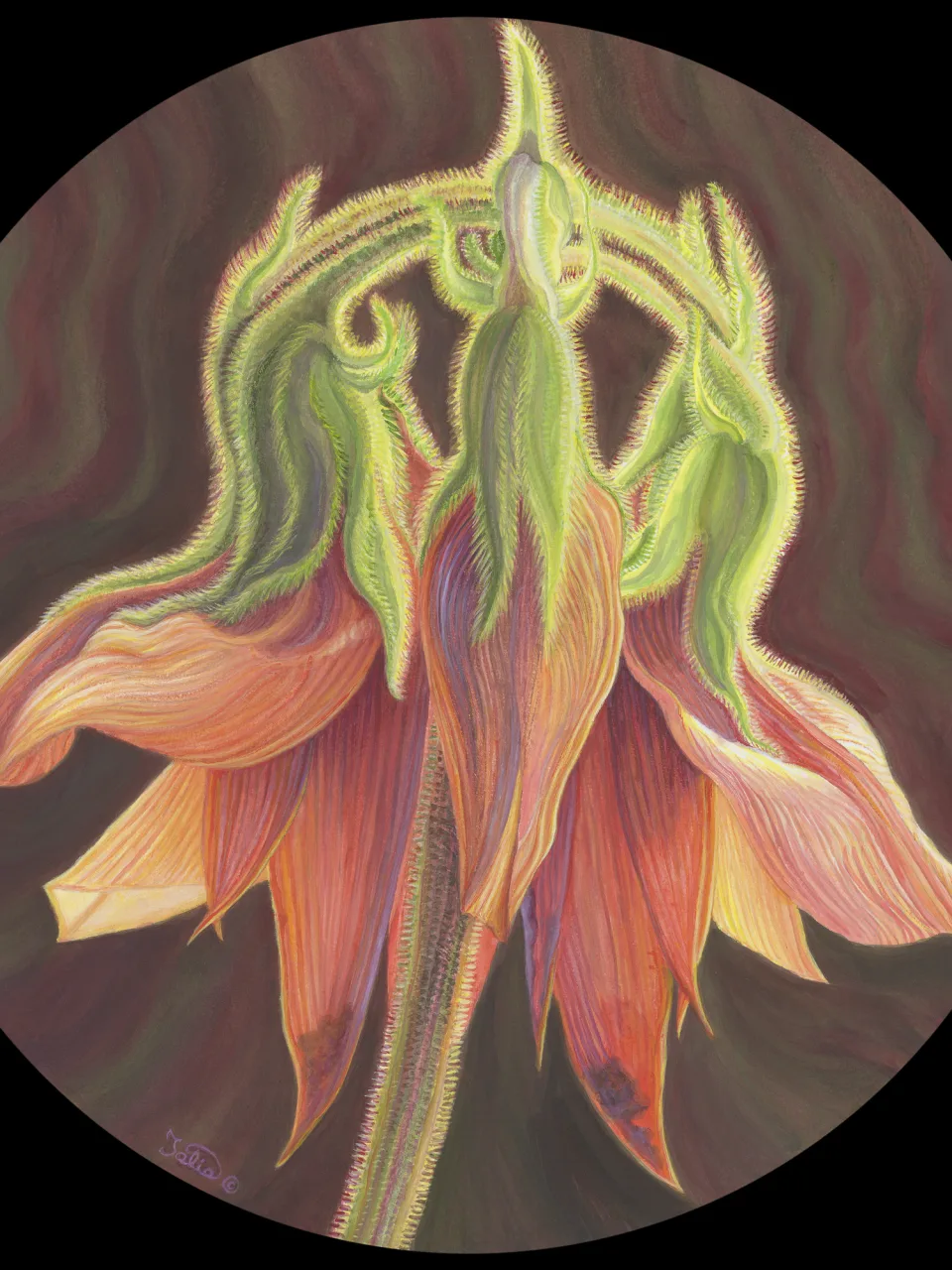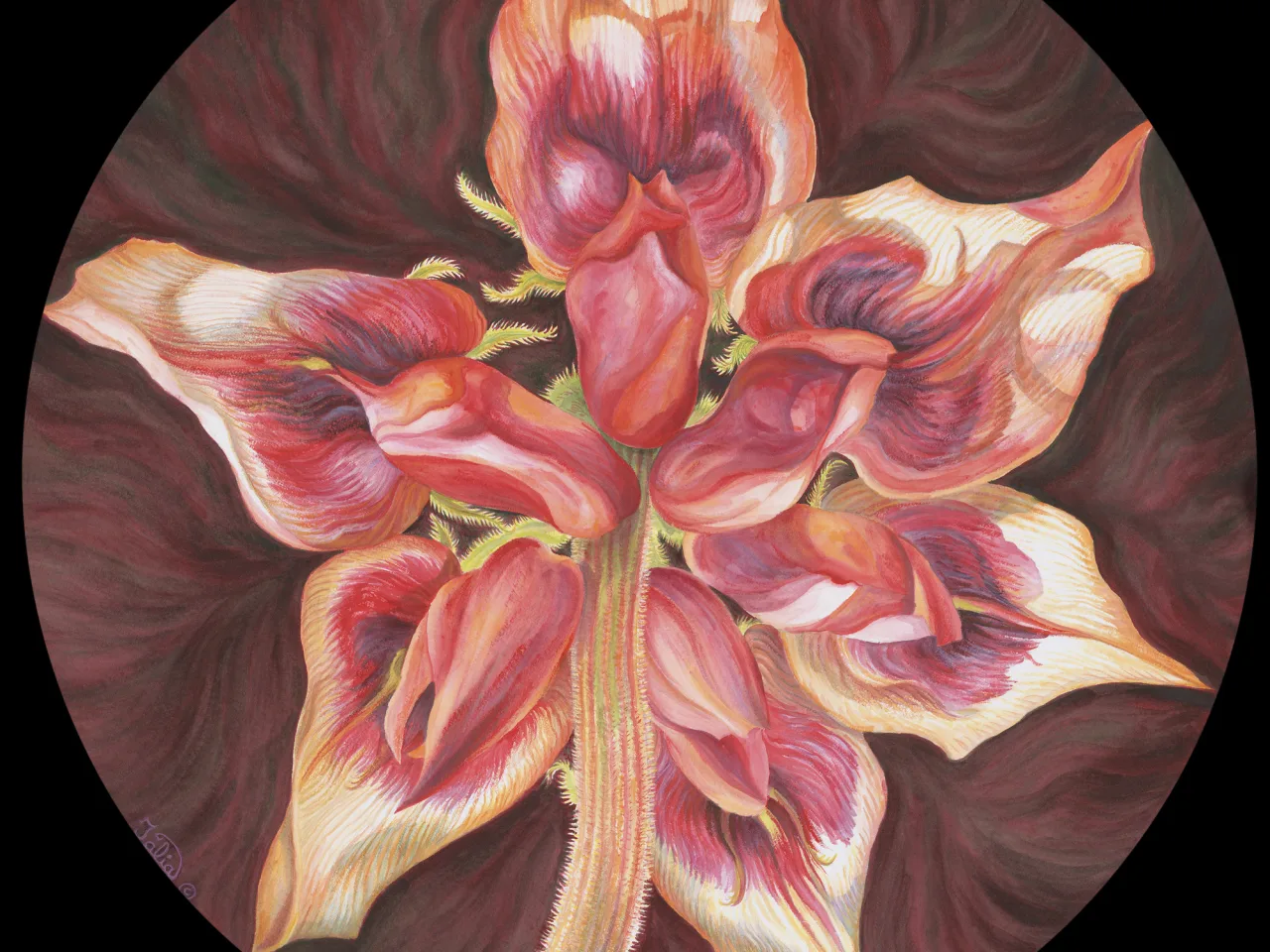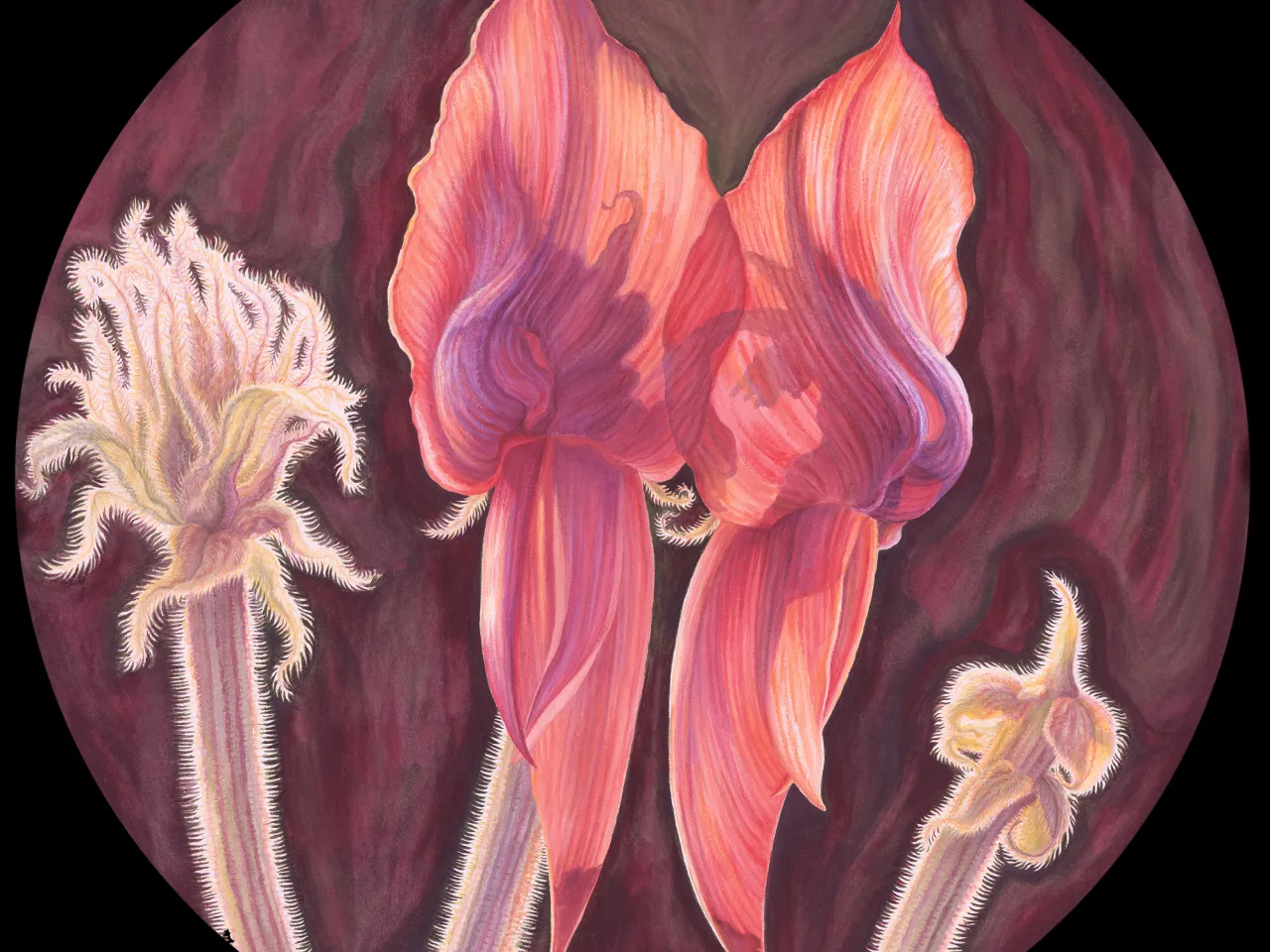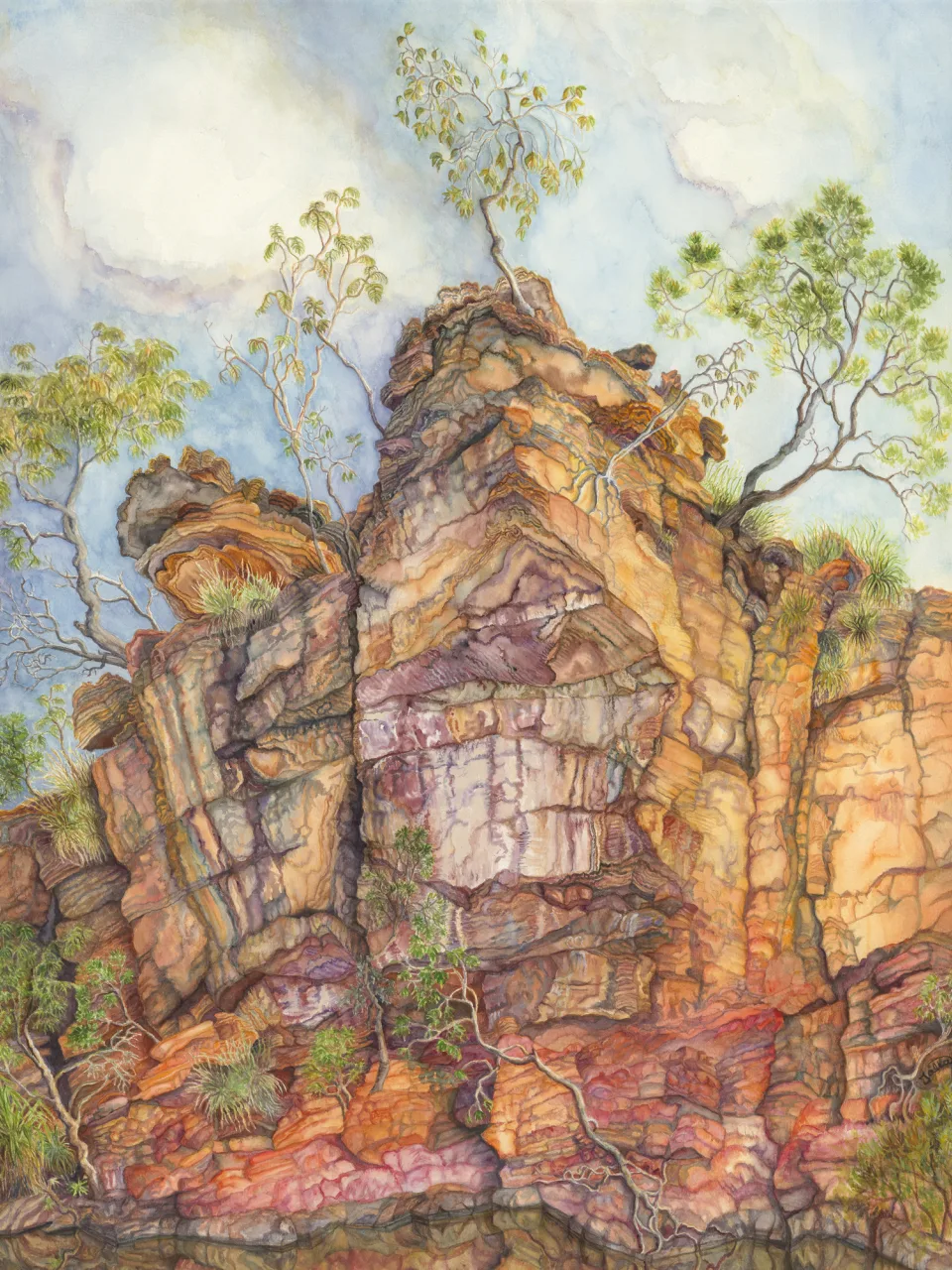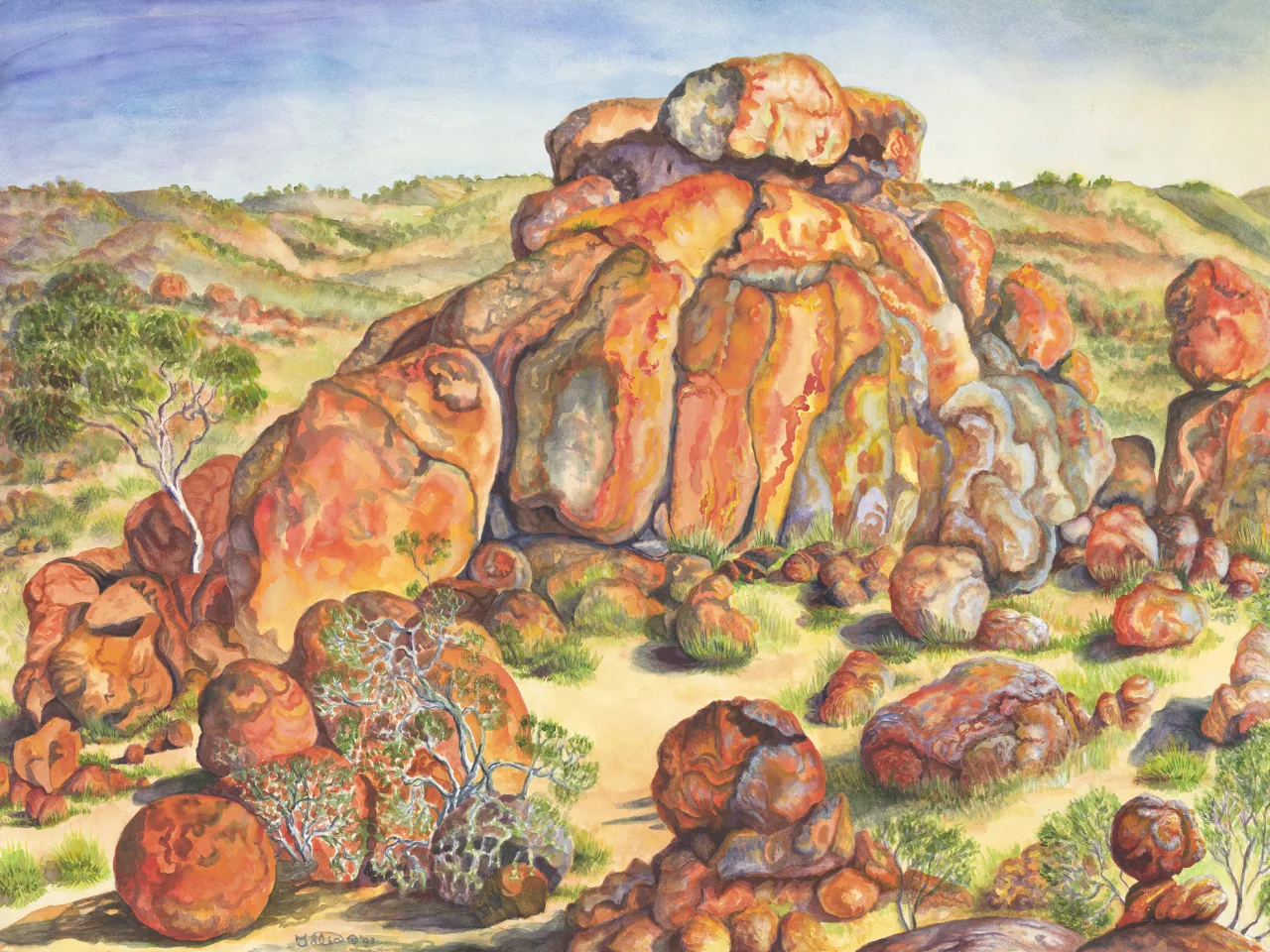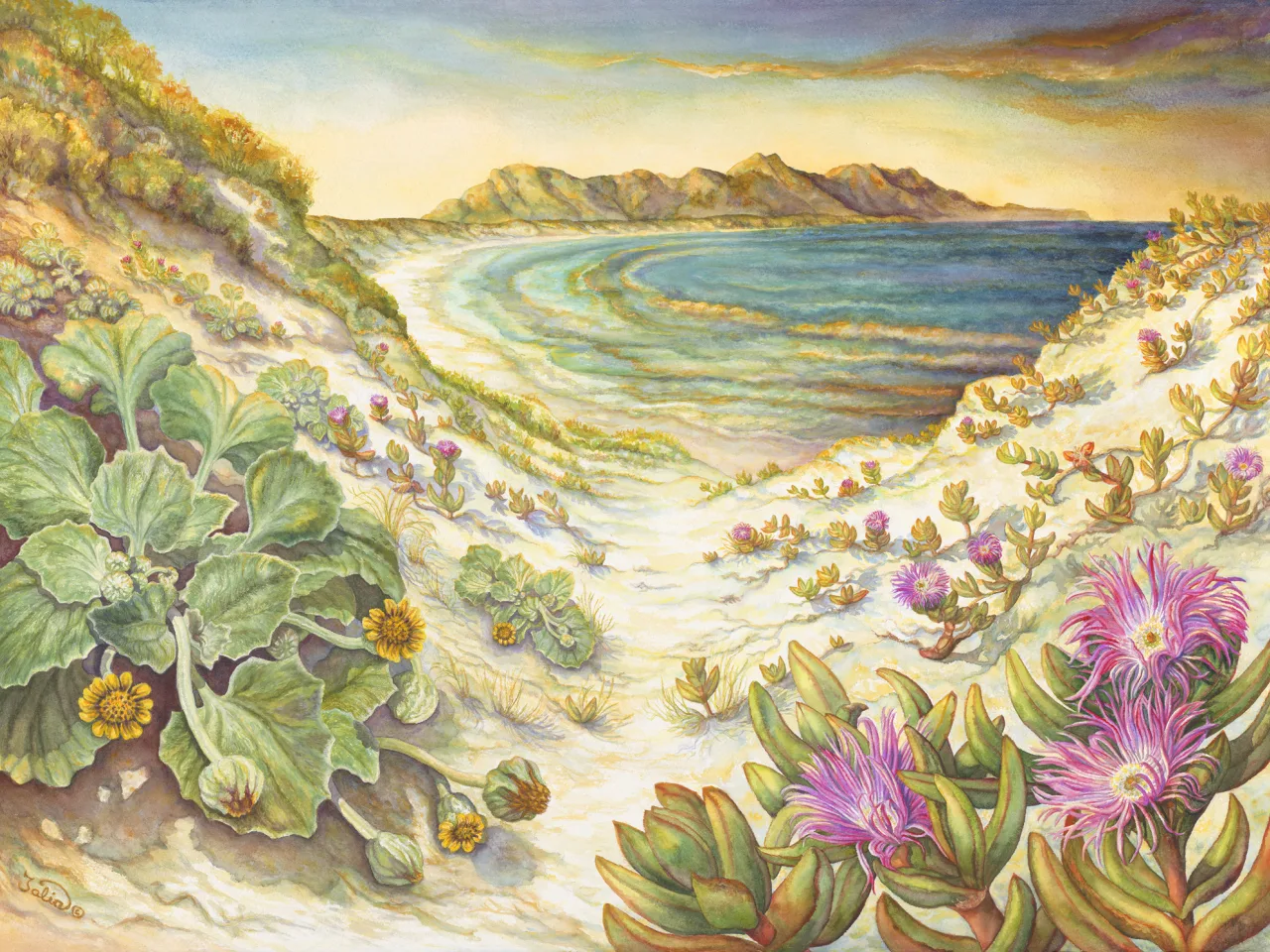Artwork 14 Outliving Most Dinosaurs: Tasmania's Celery-Top Pine
Section 11
The Podocarp Conifers—More Southerners With Ancient Northern Kinship (Podocarpaceae Family)
Tasmania
- 1. Grammitis billardierei (finger fern)
- 2. Grammitis magellanica (finger fern)
- 3. Hymenophyllum rarum (filmy fern)
- 4. Metzgeria sp. (liverwort)
- 5. Nothofagus cunninghamii (southern beech)
- 6. Phyllocladus aspleniifolius (celery-top pine)
Artwork 14
Buy a print
Limited edition giclee archival quality print on 310 gsm Ilford cotton rag (from an original work in acrylic on canvas, 76 cm high x 51 cm wide)
from the artist
The “celery-top pine” (Phyllocladus aspleniifolius) is also a plant with an ancient Gondwanan lineage. In its modern form it has been in Australia for over 110 million years (White, 1990). These ancient survivors once lived with the dinosaurs, and have outlived most (except for our wonderful surviving dinosaurs, the birds) in their last refuges—the montane rainforests of Tasmania and New Zealand, and some parts of South-East Asia.
In Tasmania, the celery-top pine is usually found in rainforests in association with leatherwood, sassafras, and Antarctic beech (Nothofagus cunninghamii), and like many rainforest plants, it is fire-sensitive. Its celery-like “leaves” are actually flattened stems (cladodes). The male “flowers” shown on the central plant are small tube-like cones (not flowers—this is not a flowering plant, but a gymnosperm). The female “flowers” (right and left plants) are actually pinkish-red scales with green-black seeds surrounded by a white fleshy aril (seed covering). The female reproductive structures are much more obvious, and more colourful, than those belonging to the males.
In this artwork the celery-top pines grow surrounded by a forest of Antarctic beech trees covered in ferns, mosses, and liverworts. The lovely blue-green “filmy ferns” with finger-like lobes (Hymenophyllum rarum) in the foreground are commonly found on logs or rocks or as epiphytes on trees in low-light conditions of wet rainforest habitat. The filmy ferns are accompanied by varied mosses and Metzgeria liverworts, which are common epiphytes in rainforest and fern gullies. Many moss and liverwort species are shared with Far North Queensland, and some with New Zealand, South Africa, and Antarctica—demonstrating that these ancient plants also have a Gondwanan heritage (Meagher & Fuhrer, 2003).
The pirouetting ferns dancing up and over the trunks and branches of the Nothofagus tree are “finger ferns”. Those growing higher on the trees are Grammitis magellanica. They have long and slender fronds, and can grow in low-light and wet conditions like their lower-growing companions Grammitis billardierei, with whom they share their host trees (Garrett, 1996).

